
Neurobiology of the Platynereis ciliated larva
University of Washington’s Friday Harbor Labs
Recorded talk Aug 8, 2024
Gáspár Jékely
Centre for Organismal Studies, Heidelberg University
Platynereis dumerilii
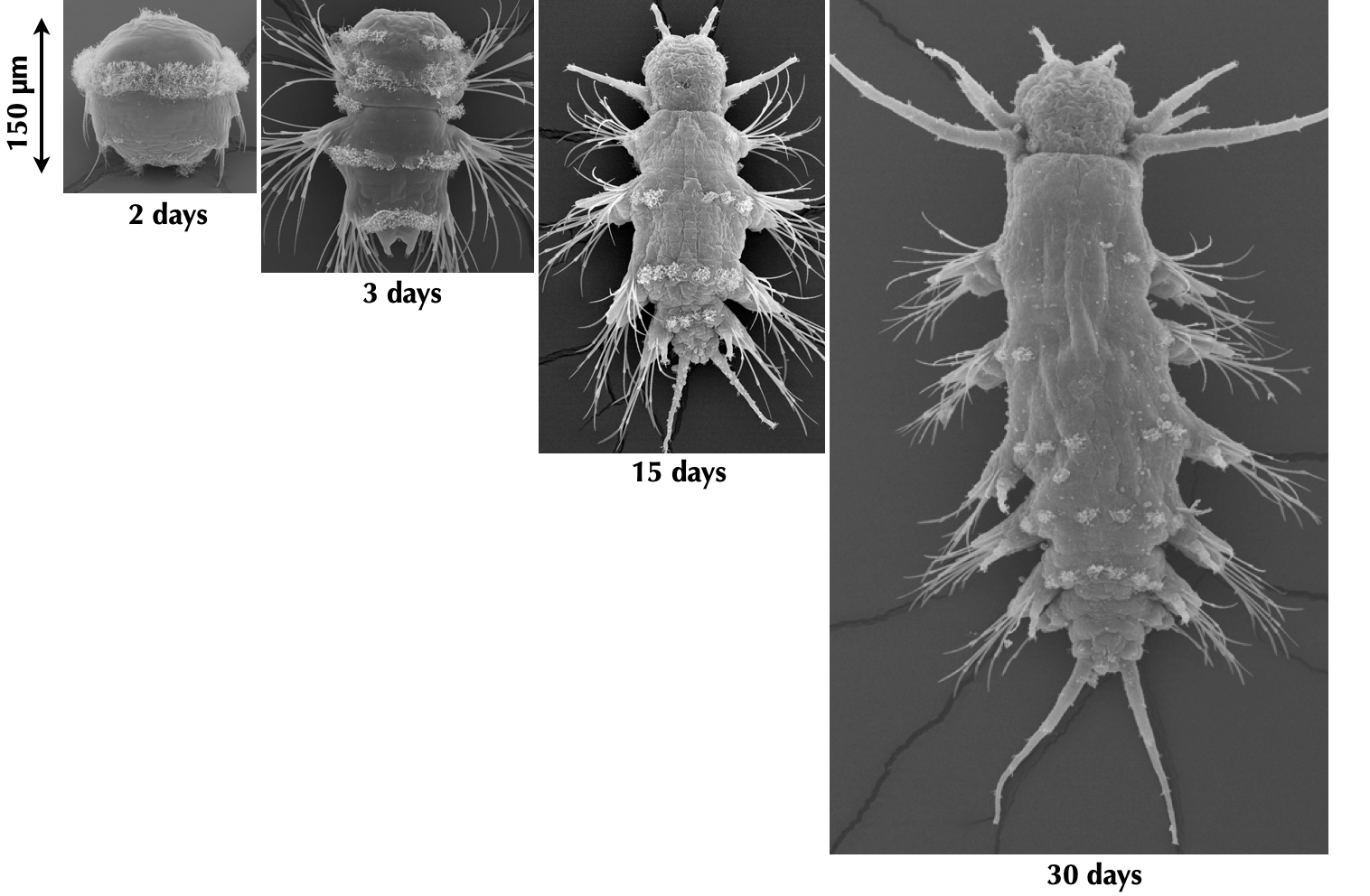
- breeding culture
- microinjection, transgenesis
- neuron-specific promoters and antibodies
- knock-out lines
- neuronal connectome
- neuronal activity imaging 😎
Platynereis dumerilii
Spawning
movie by Albrecht Fischer
Synchronously developing larvae
Simple direction-sensing eyespots in the trochophore
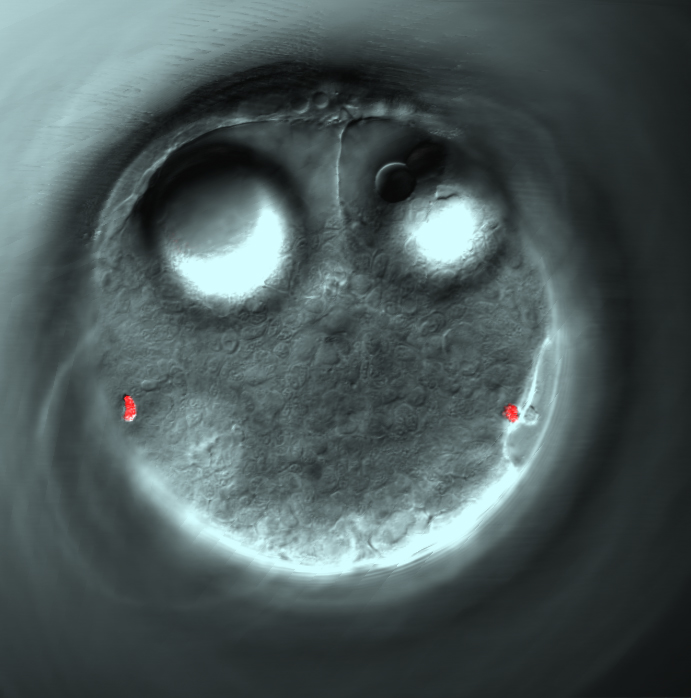
trochophora larva
Direct sensory-motor coupling of eyes to cilia
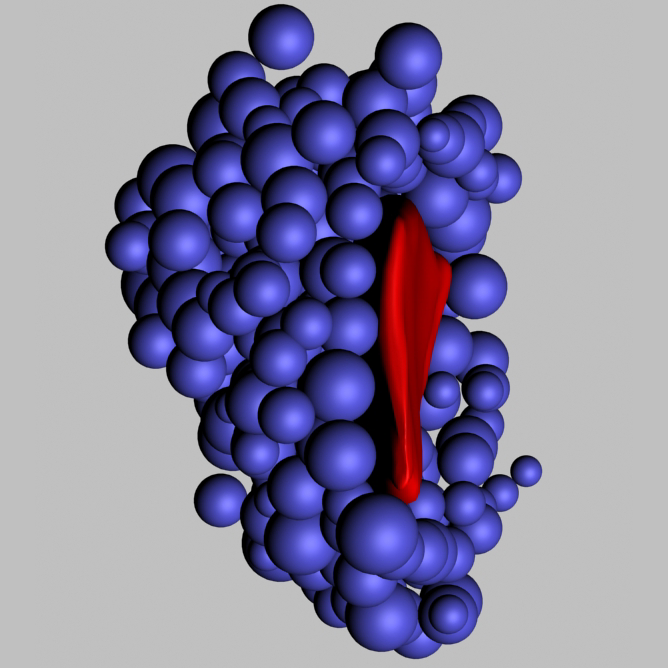 pigment cup of eye
pigment cup of eye
photoreceptor cell
The eyespots mediate phototaxis

Helical swimming, sensing and turning are tightly linked

Visual phototaxis with 2-pixel eyes
Whole-body volume EM of an entire Platynereis larva
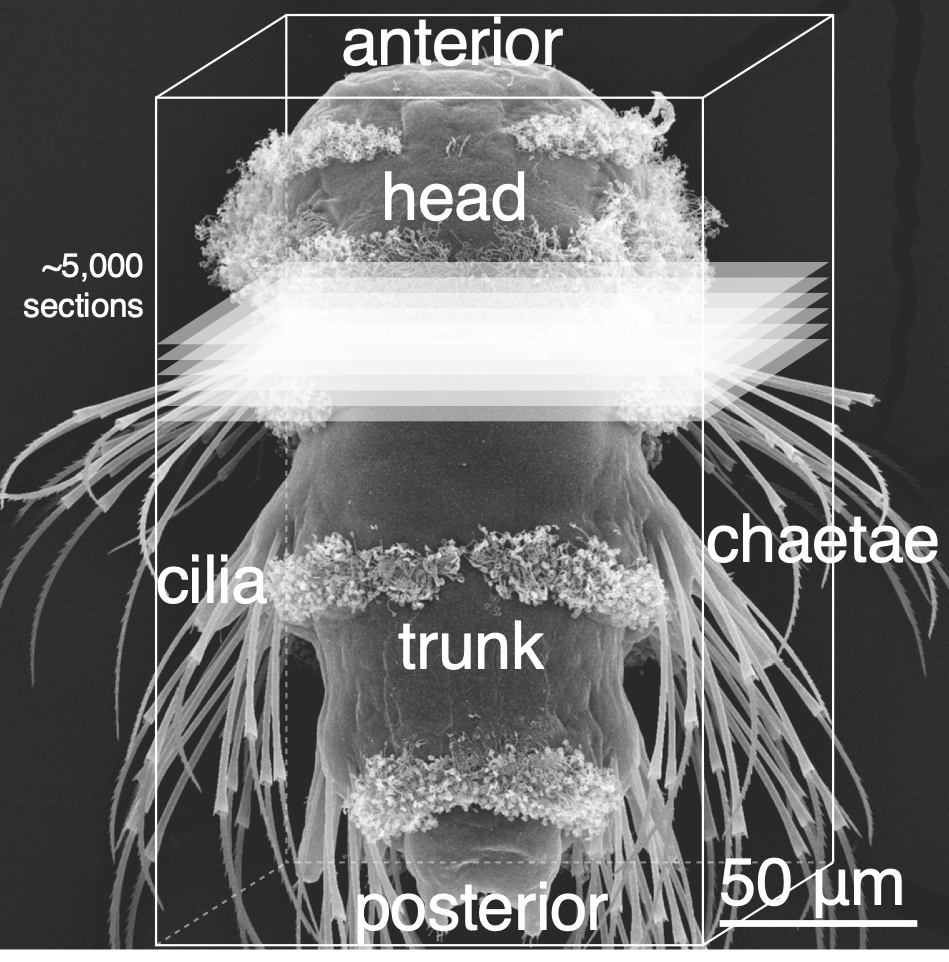
The nervous system of the larva
~2,000 neurons
Synaptic connectome
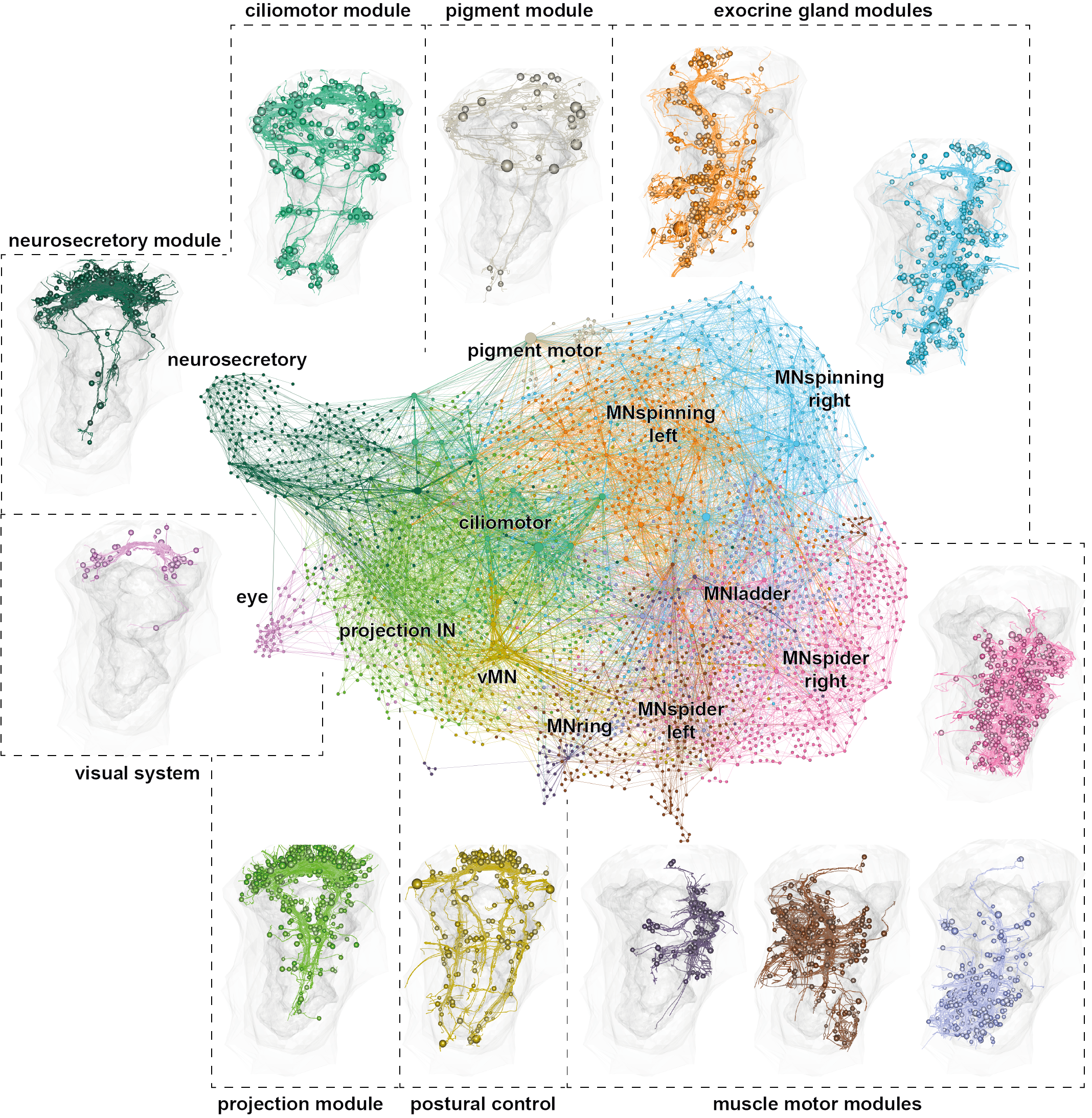
Annotation of all cell types

Information flow from sensors to effectors
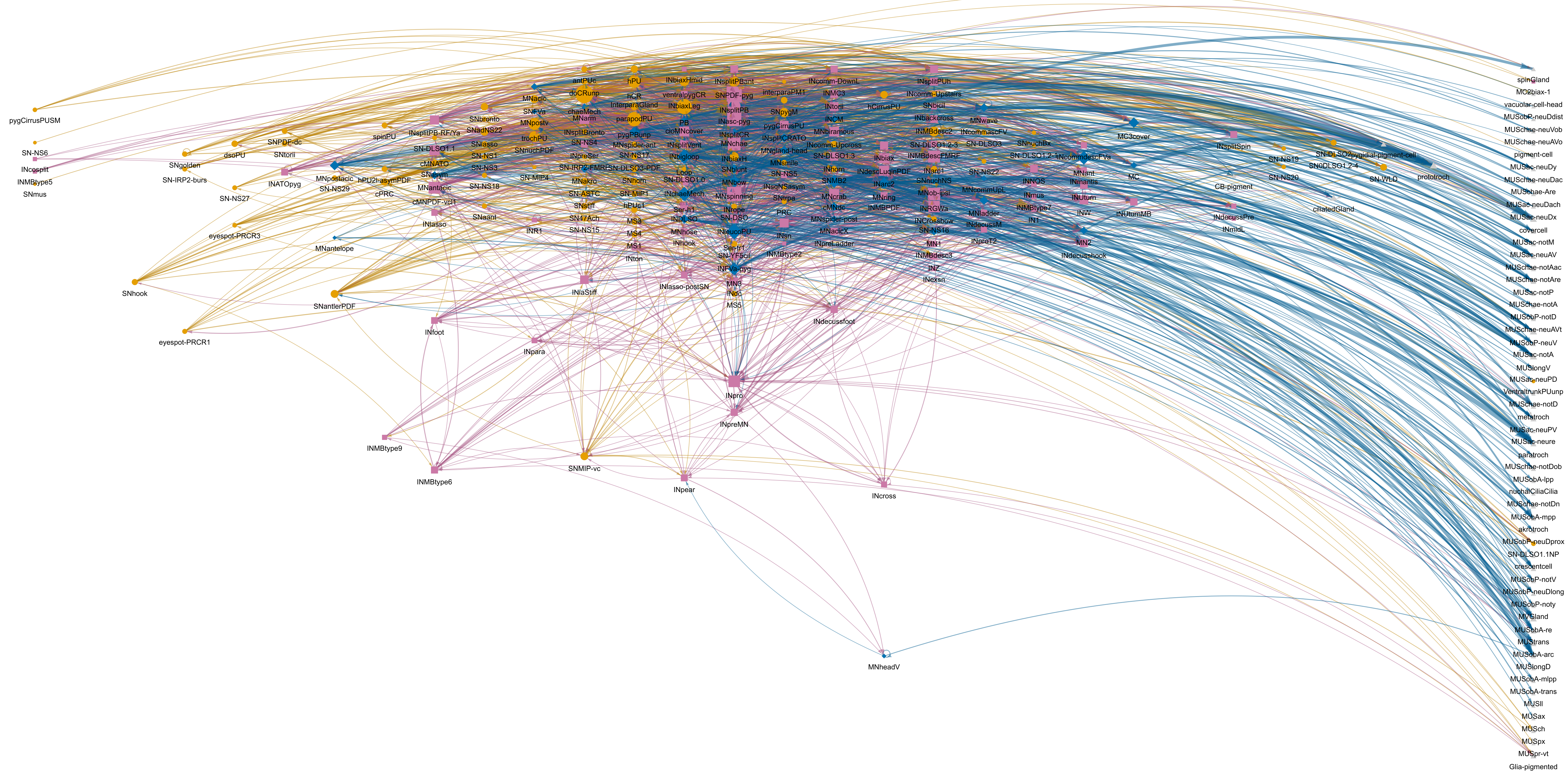
![]()
Sensory cell synapses
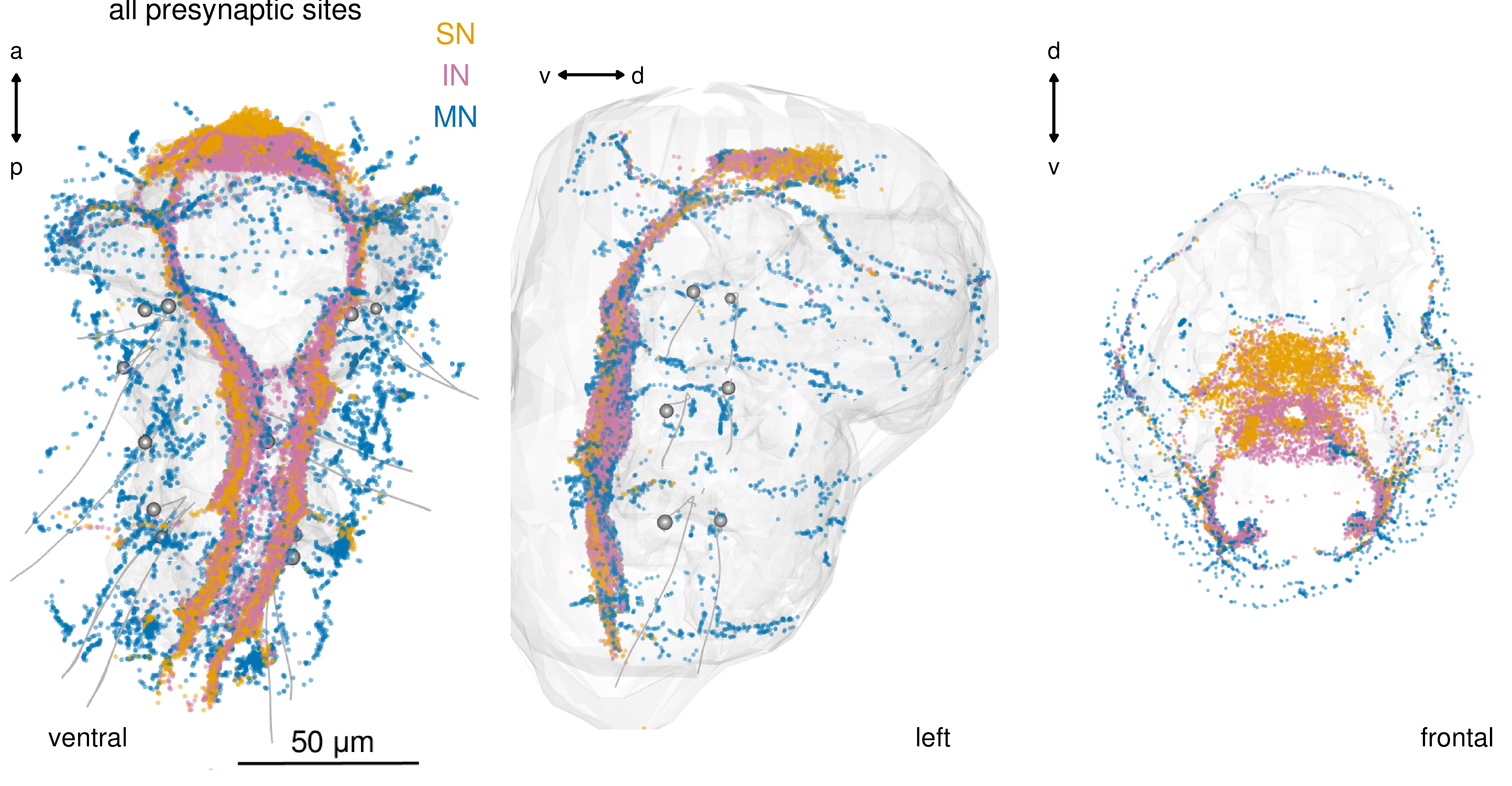
Sensory cells in the head
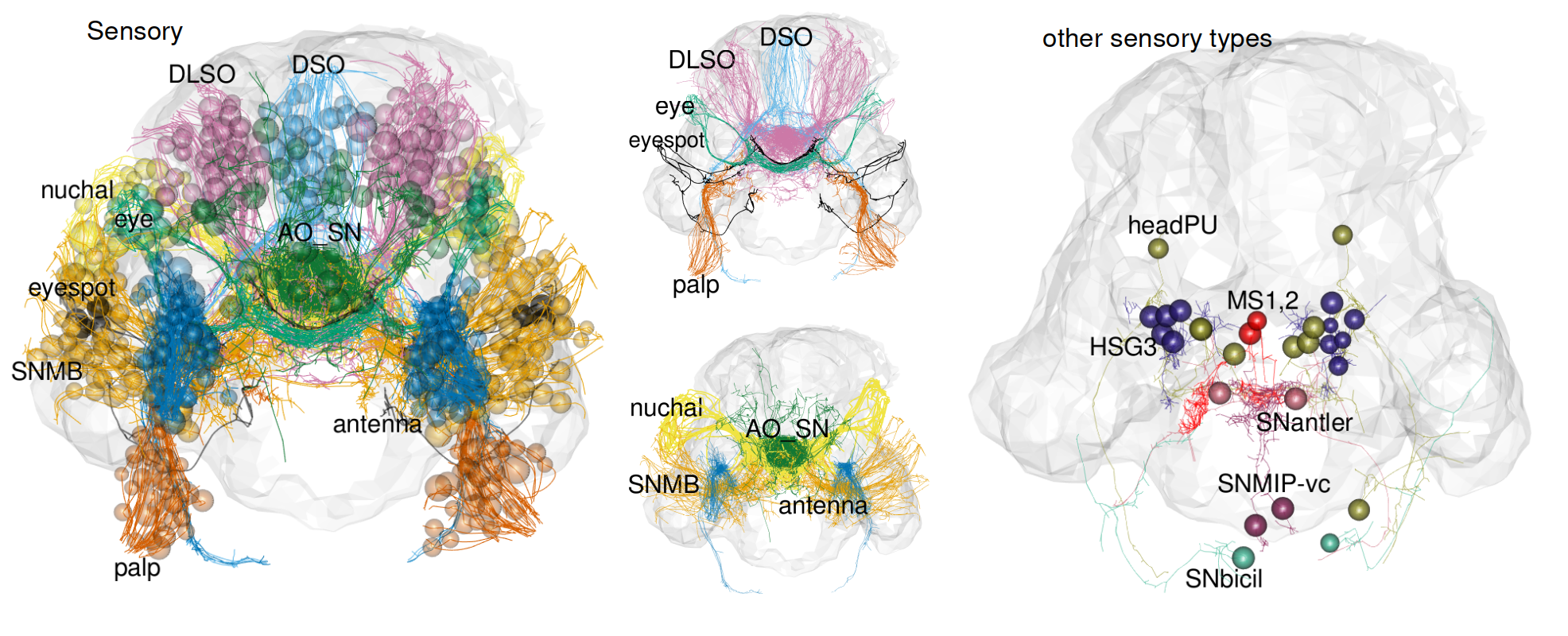
Mushroom bodies

The mechanosensory girdle
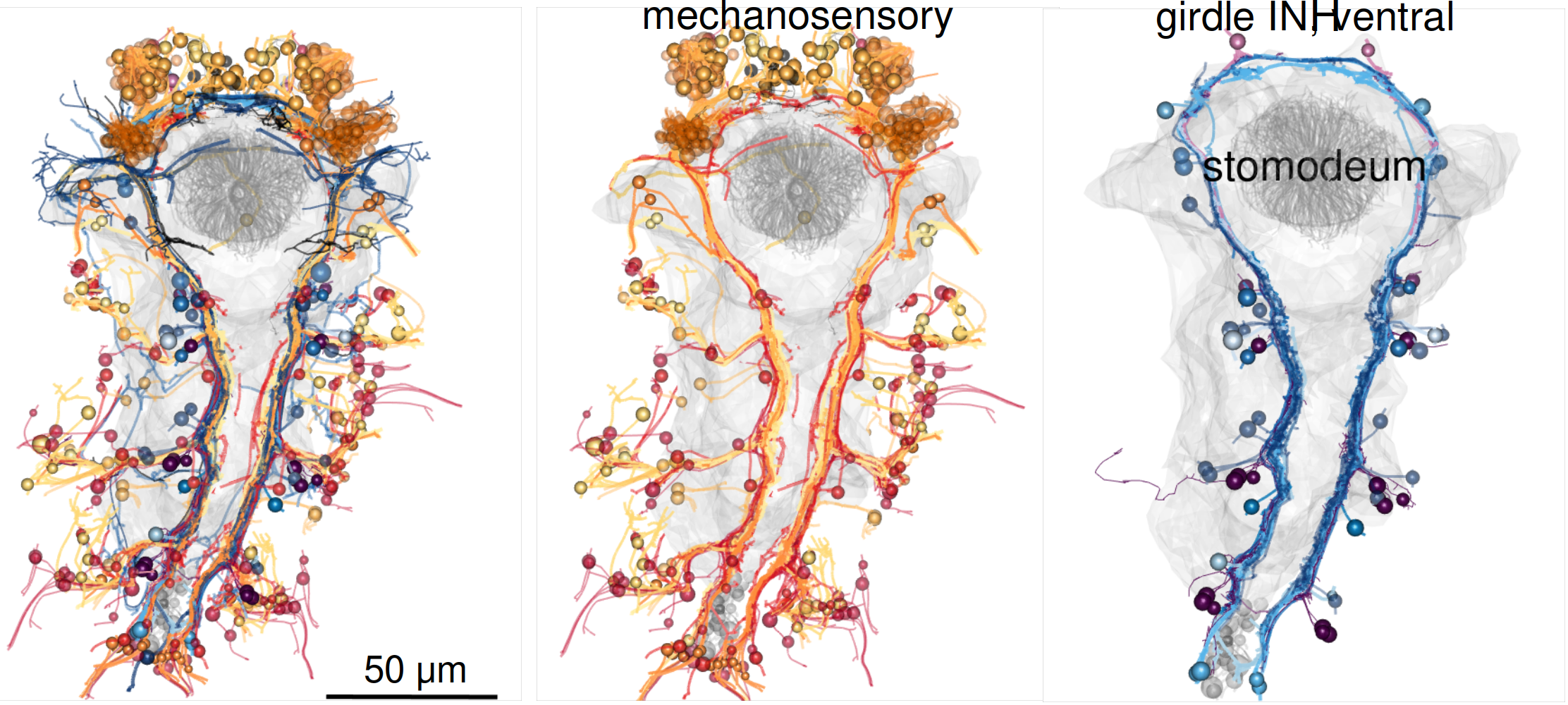
Hydrodynamic startle response
Neural circuit of the visual eyes
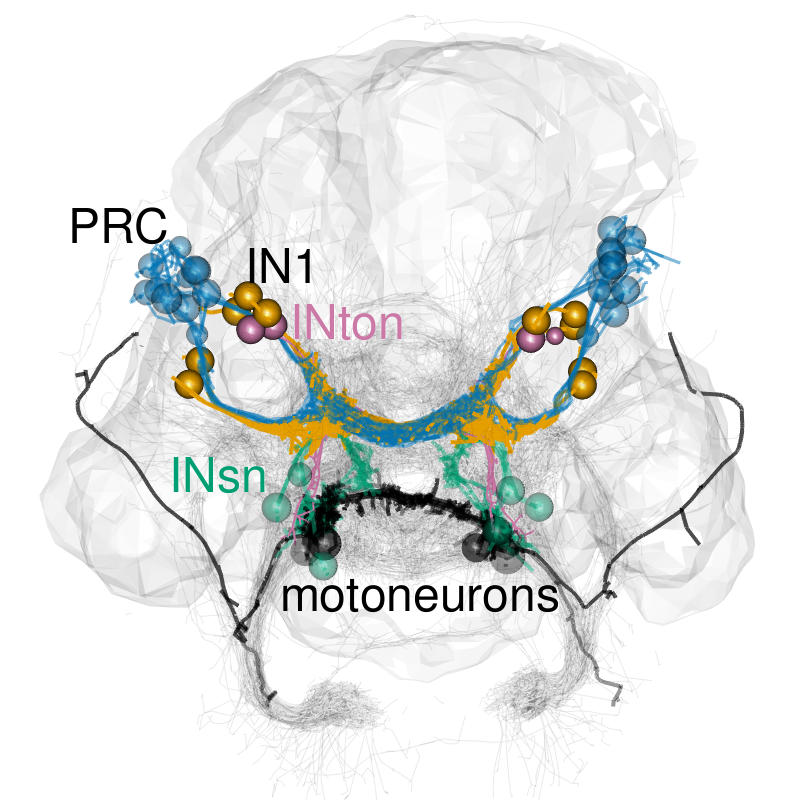
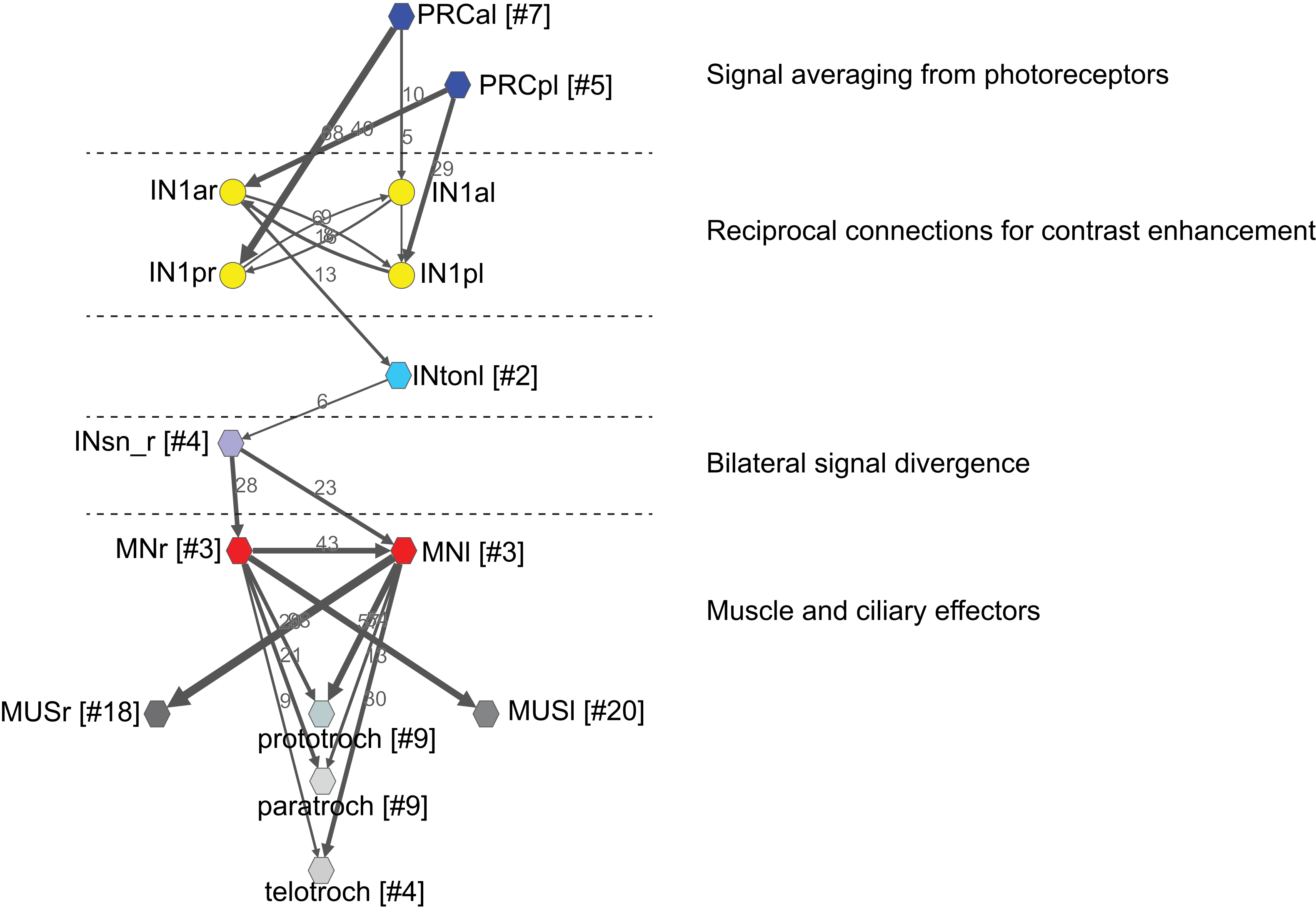
Simple eyespots are widespread in marine larvae

In quest of the origin of eyes
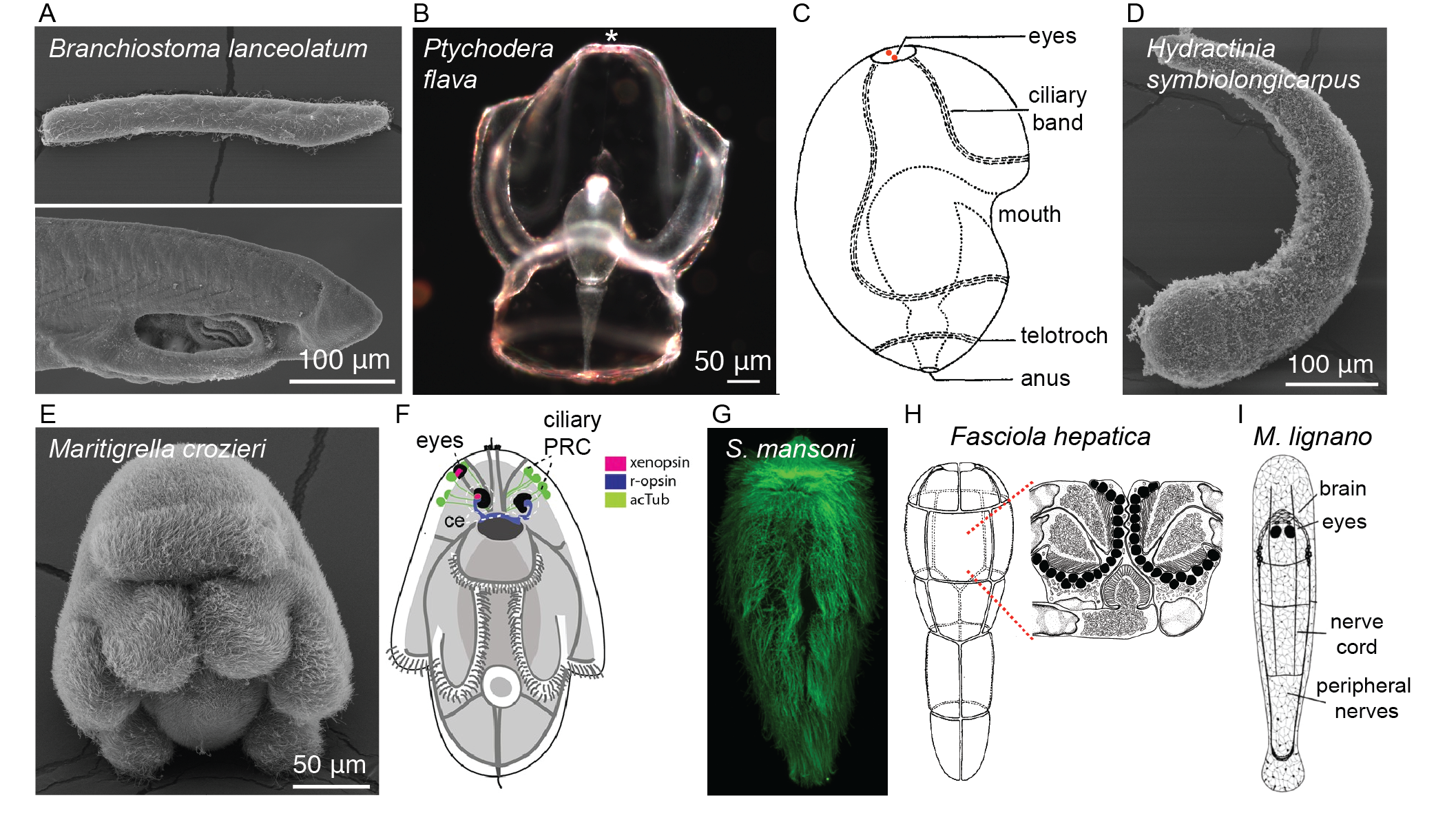
UV response in Platynereis larvae
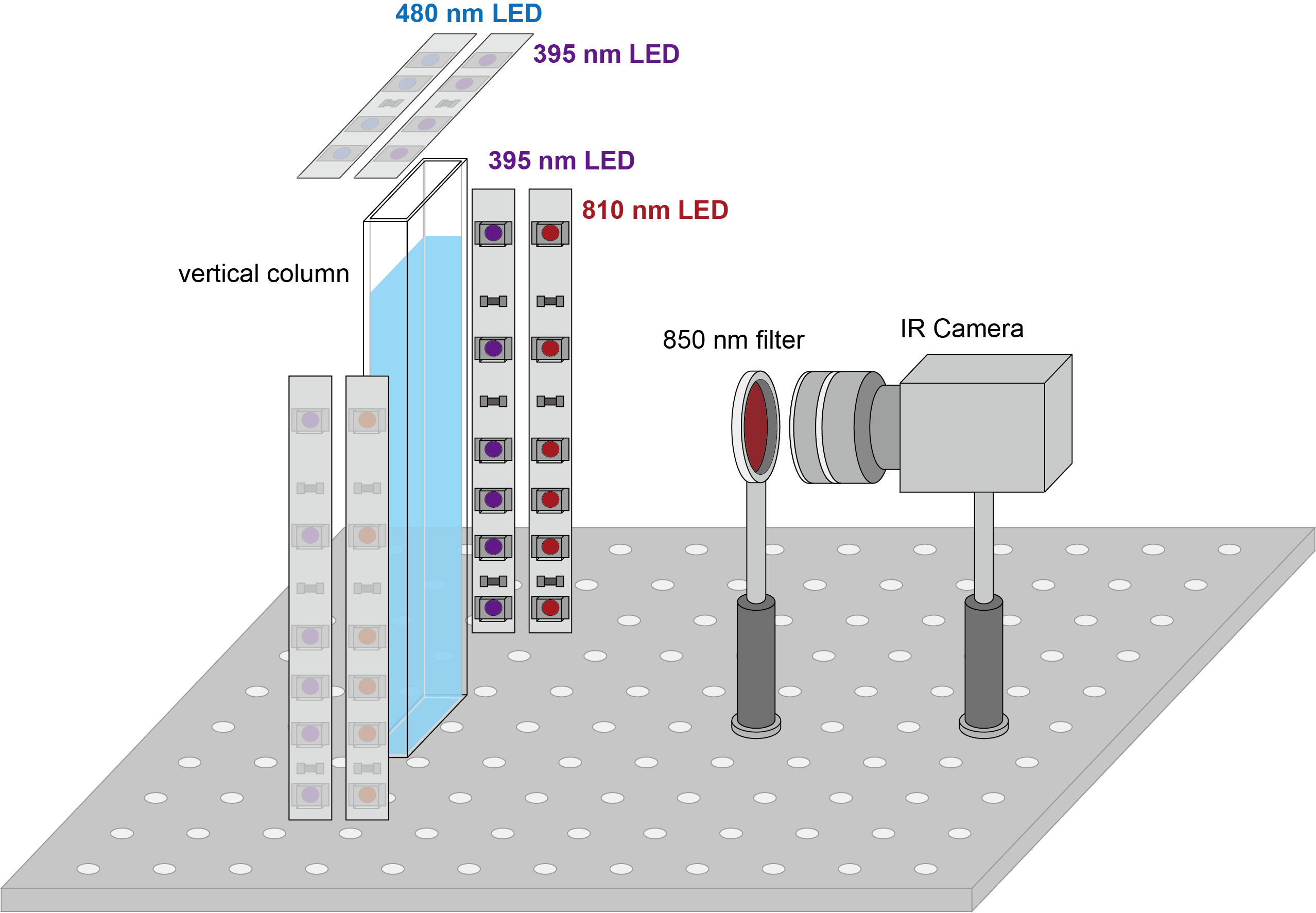
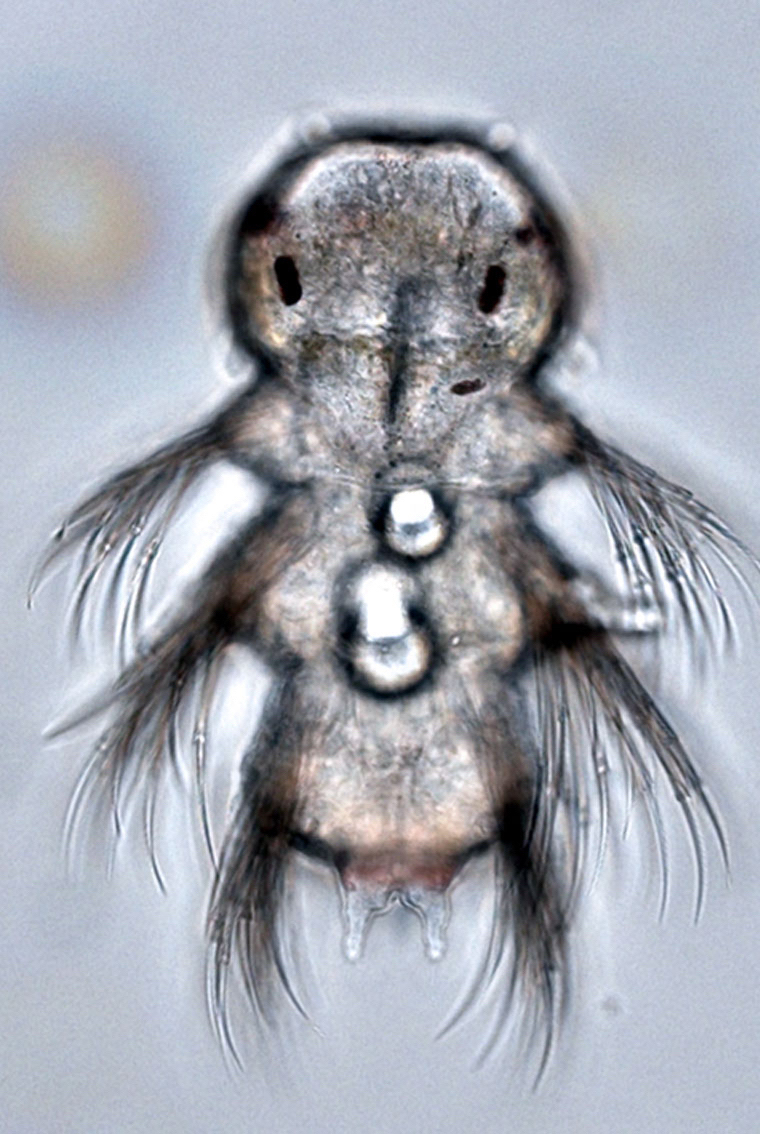
UV response in Platynereis larvae
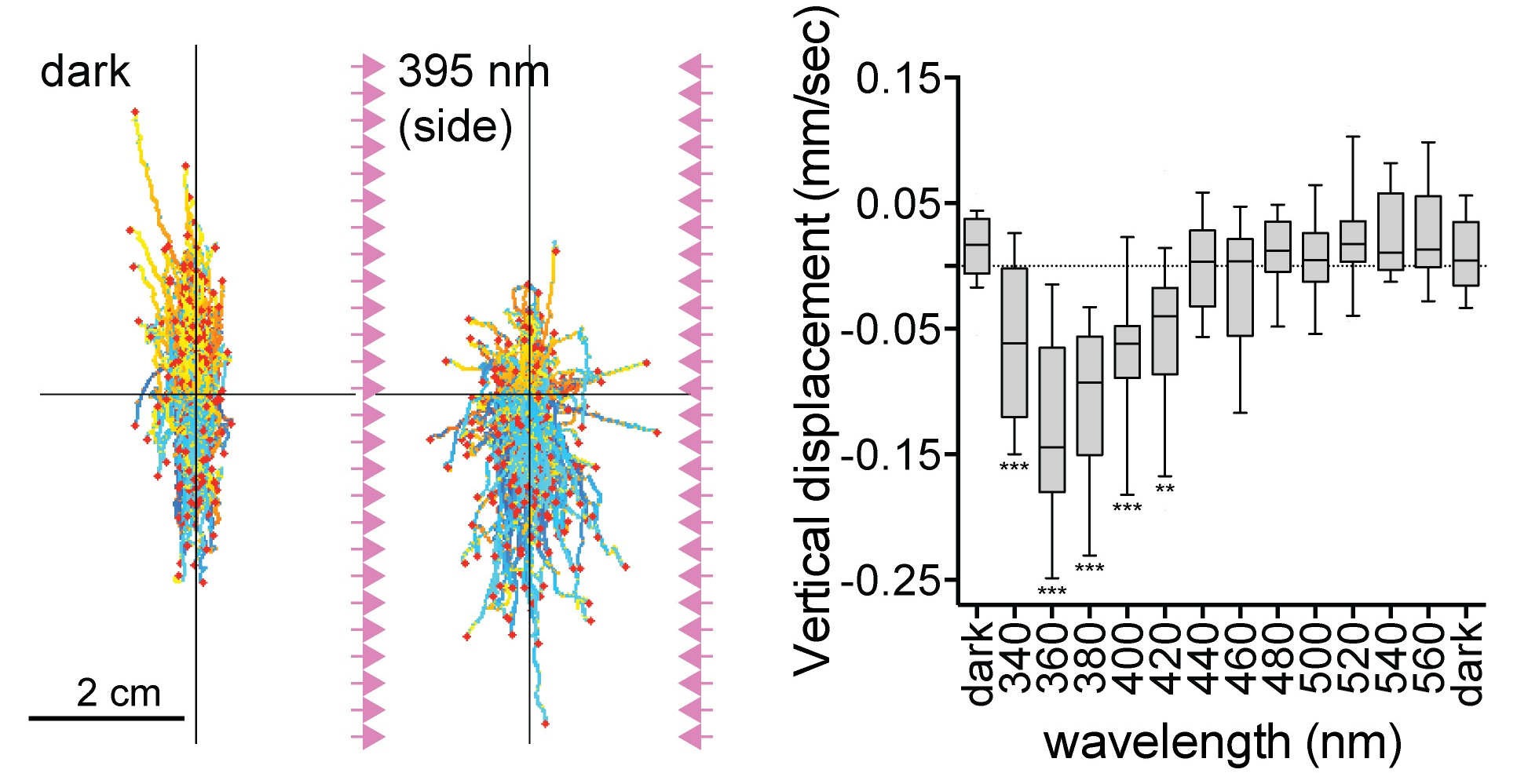
Brain ciliary photoreceptors with ramified cilia

Ciliary photoreceptors express a UV opsin, c-opsin1
Reduced ciliary compartment in c-opsin1 mutants
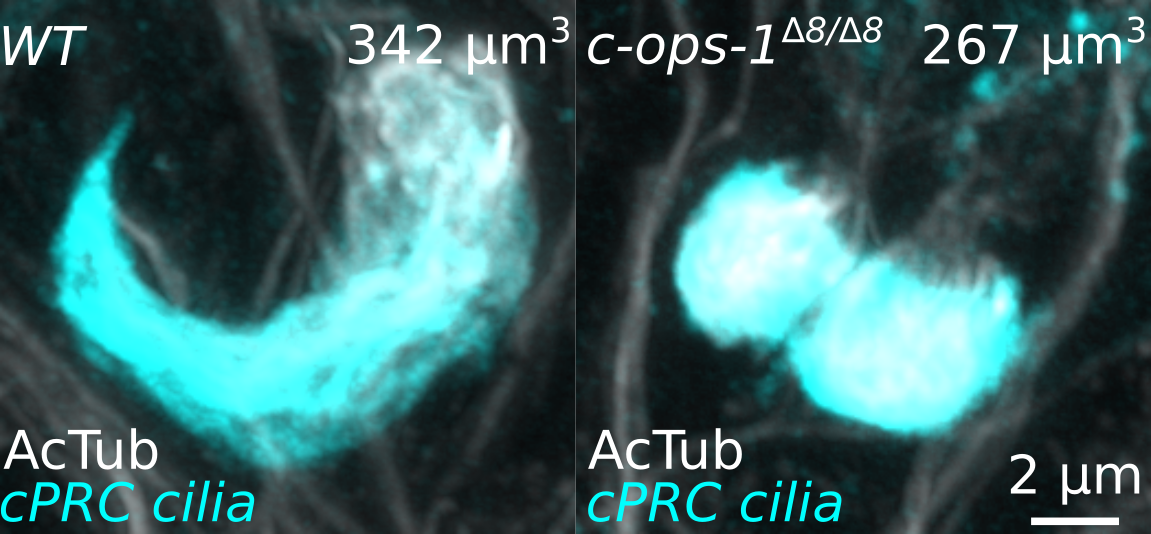
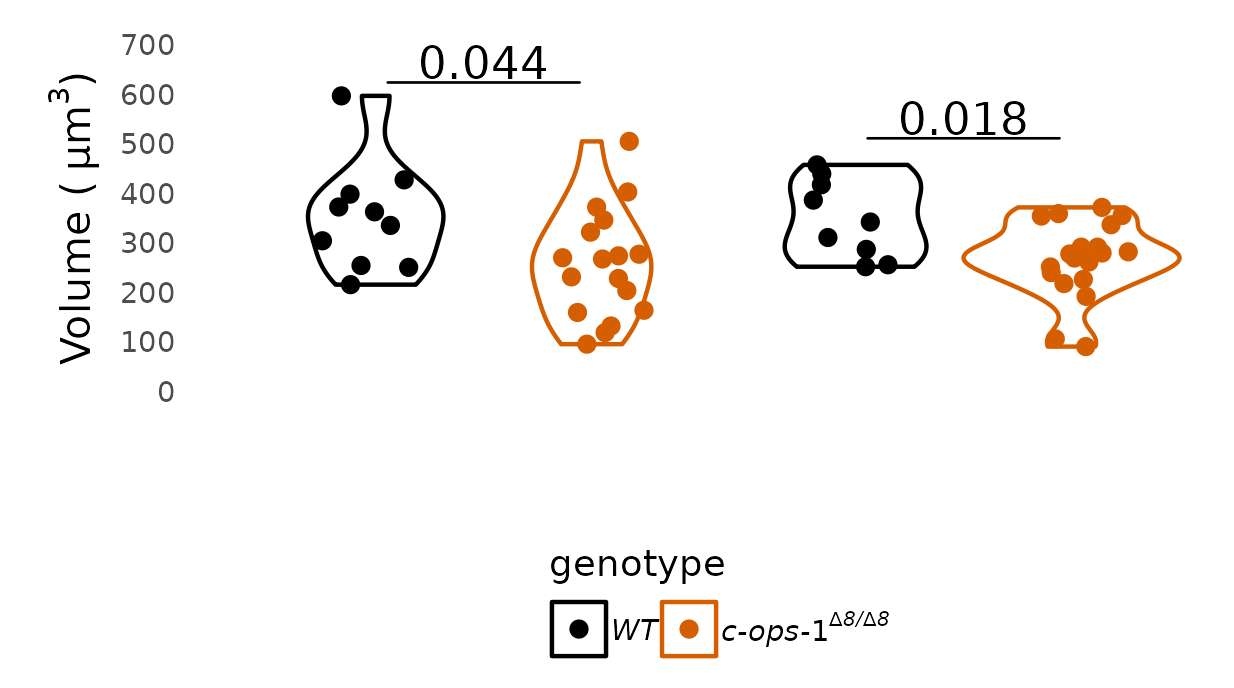
UV avoidance is dependent on c-opsin1
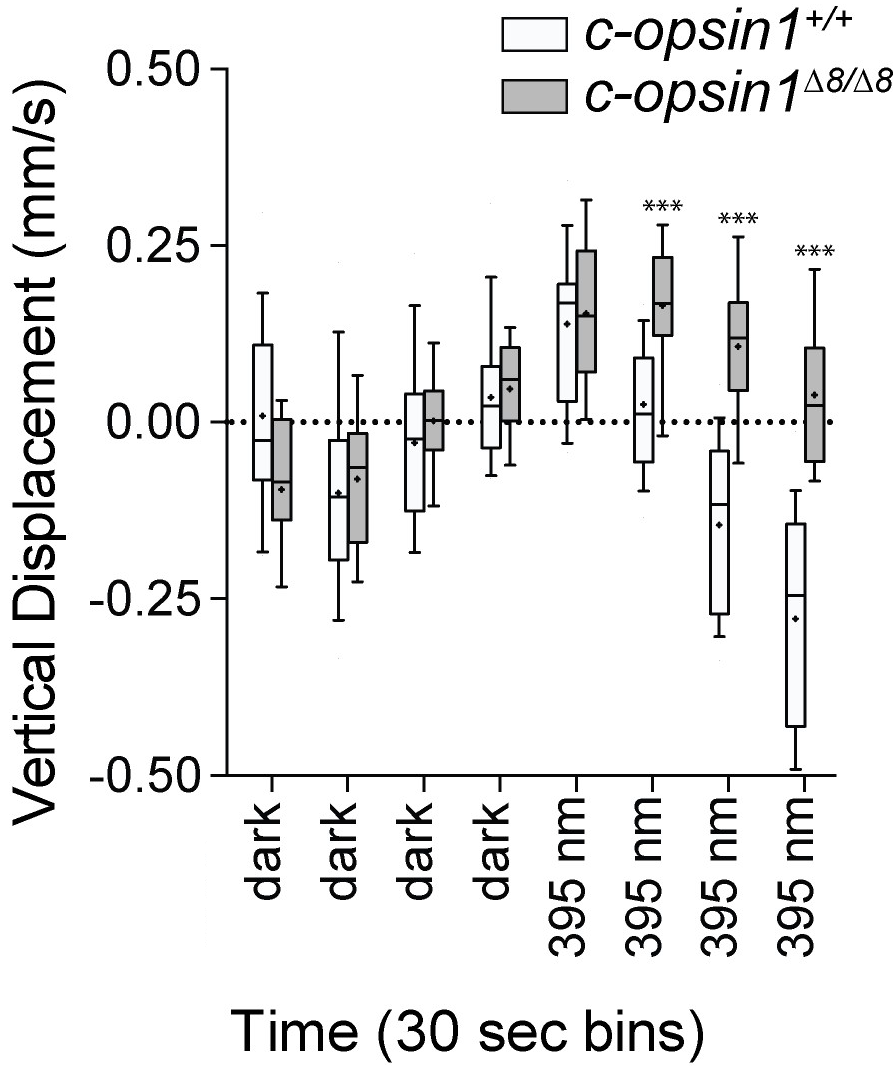
Circuitry of ciliary photoreceptors
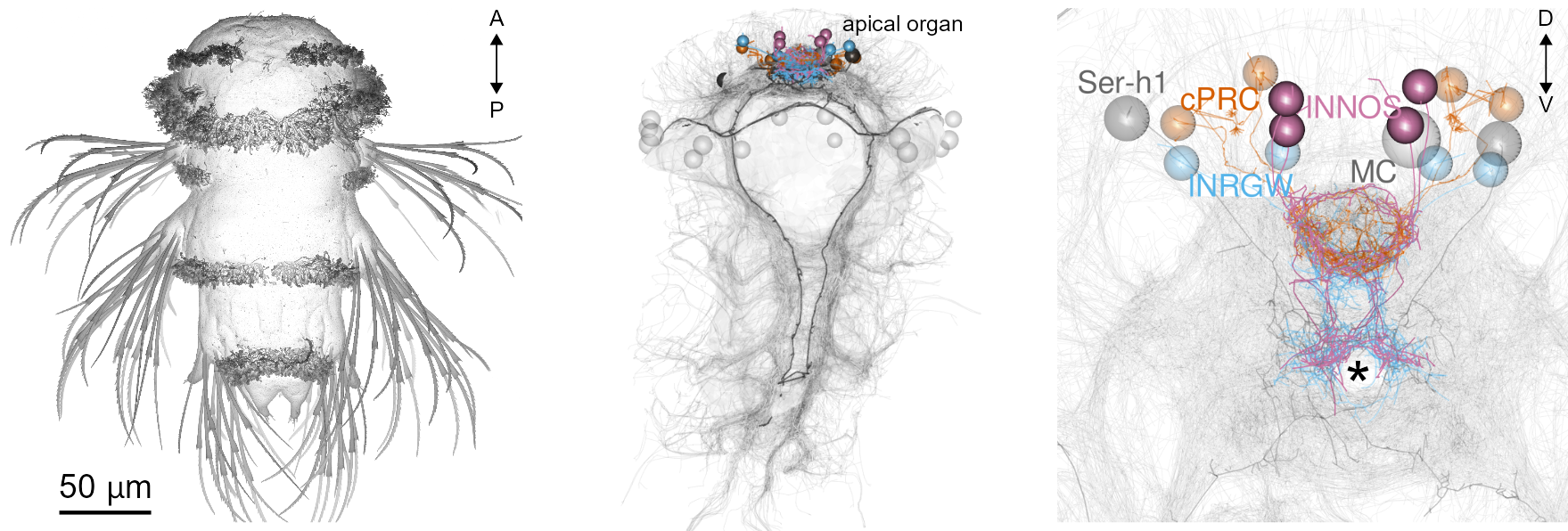
Circuitry of ciliary photoreceptors
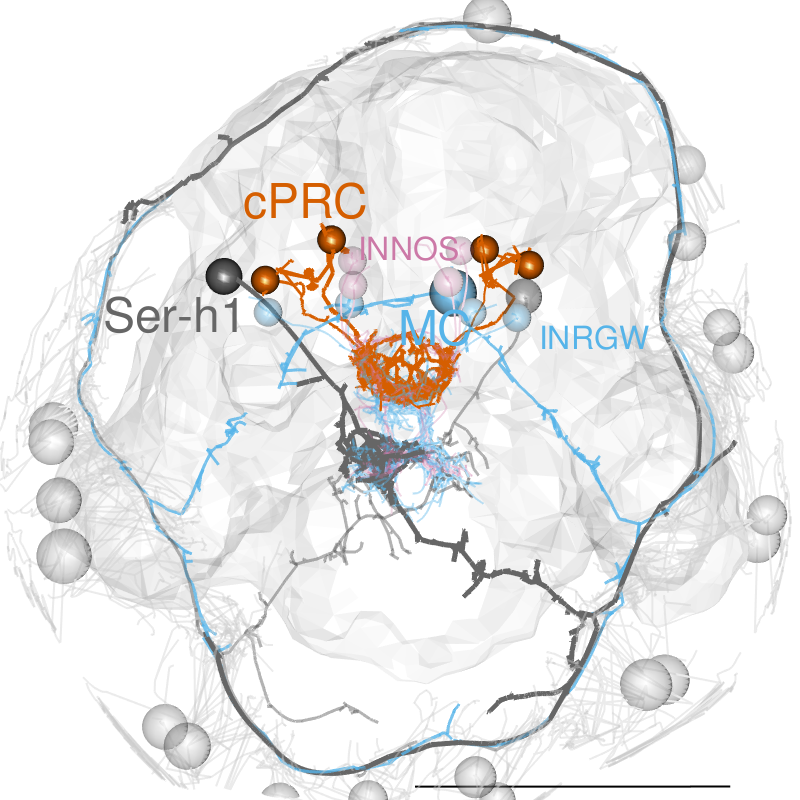
Serotonergic neurons to activate cilia
Ser-h1 neurons, EM reconstruction
Strong cPRC activation after UV exposure
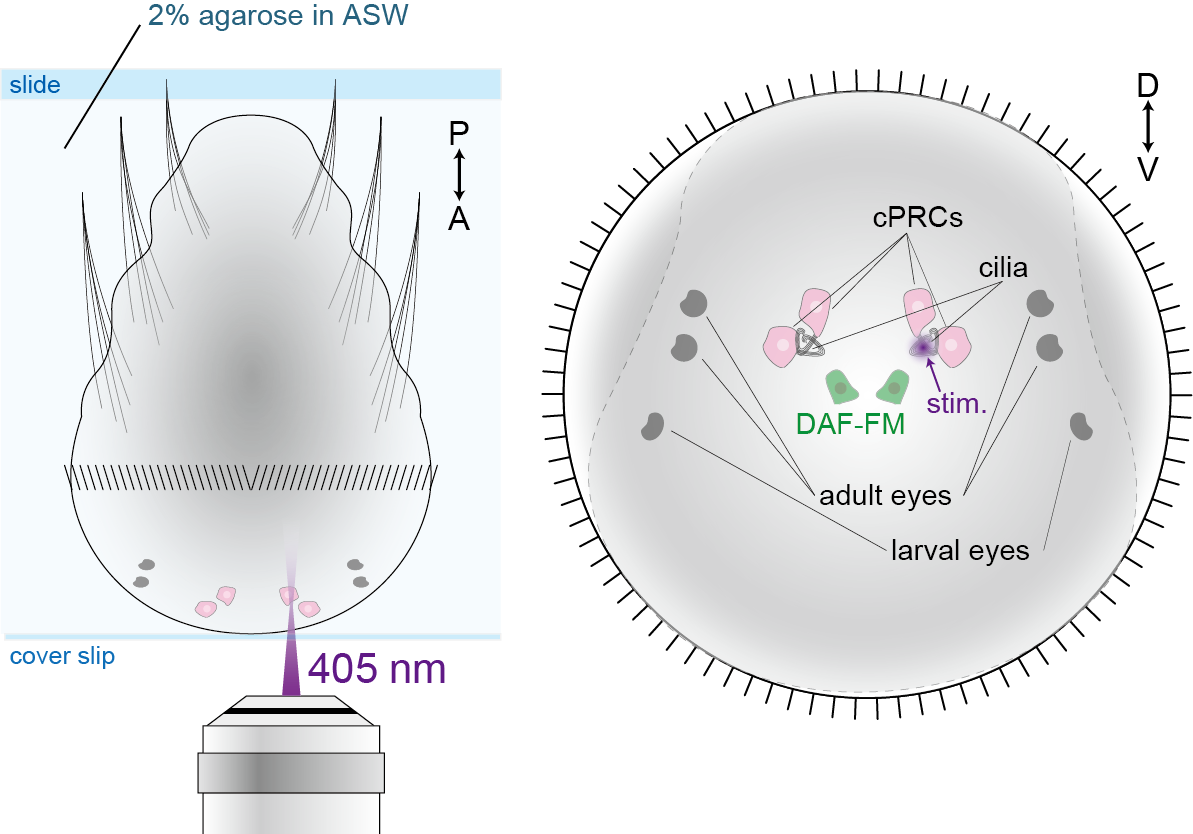
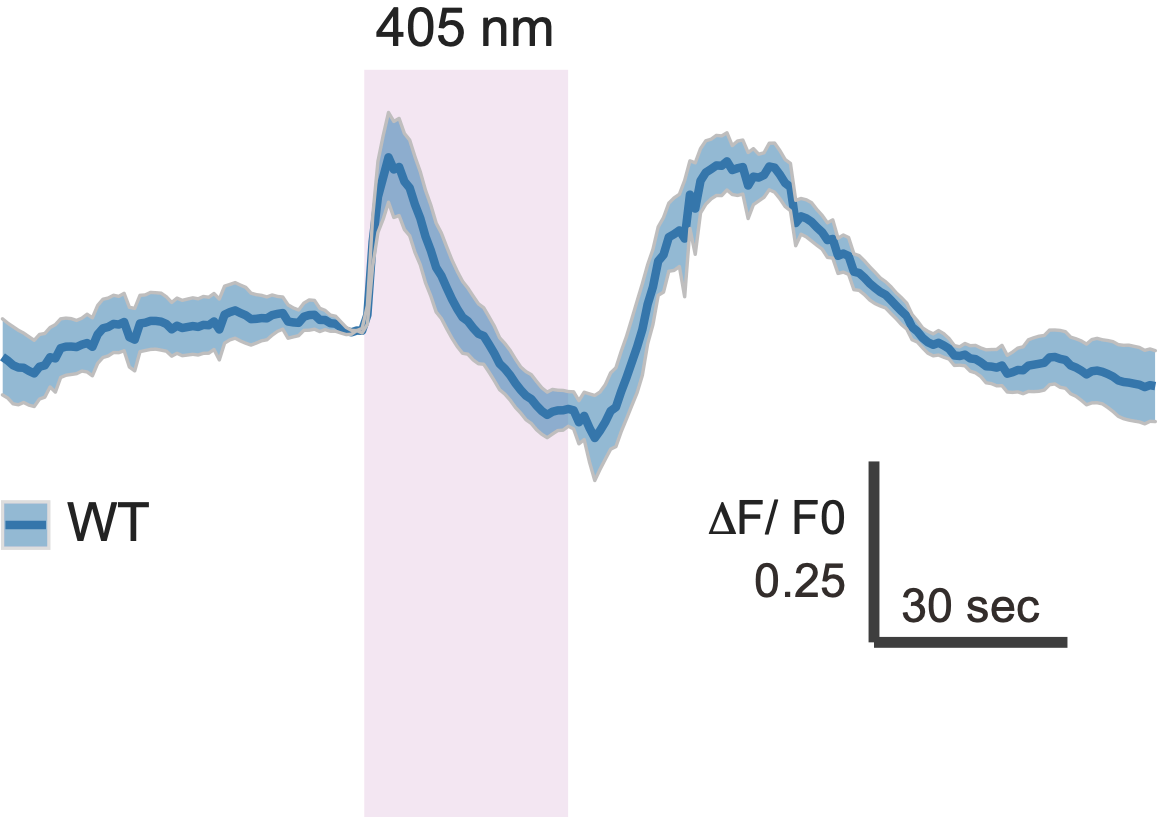

UV response is c-opsin1-dependent
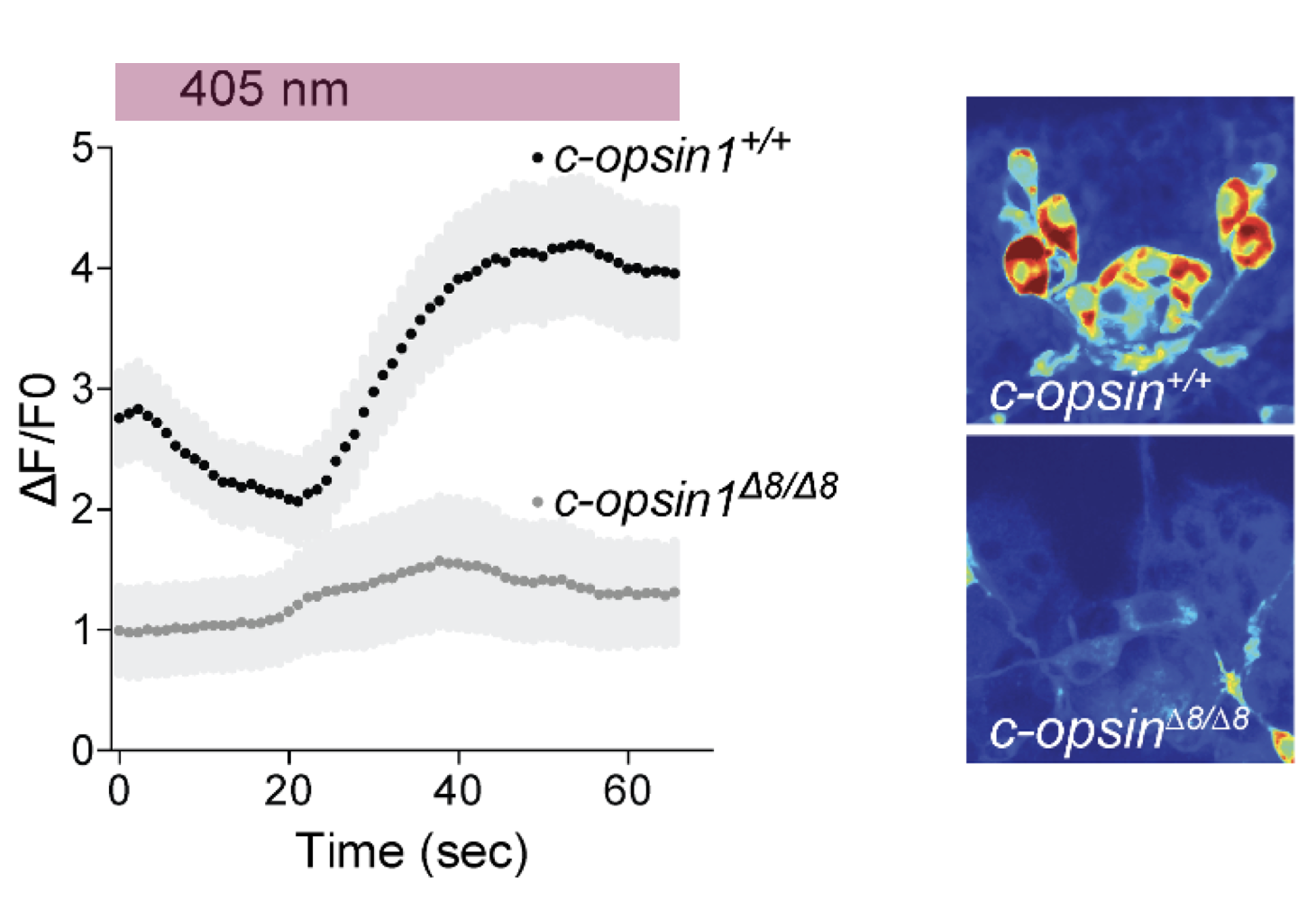
Nitric-oxide synthase in postsynaptic interneurons

HCR
Transgenic labelling
immunostaining
NO is produced in the neuropil after UV stimulation
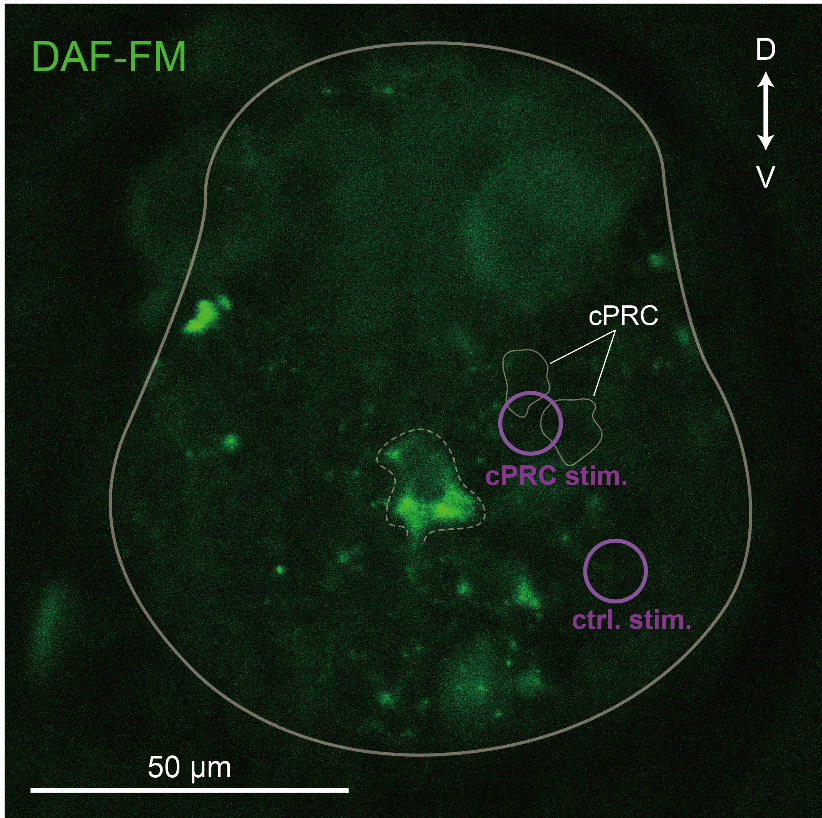
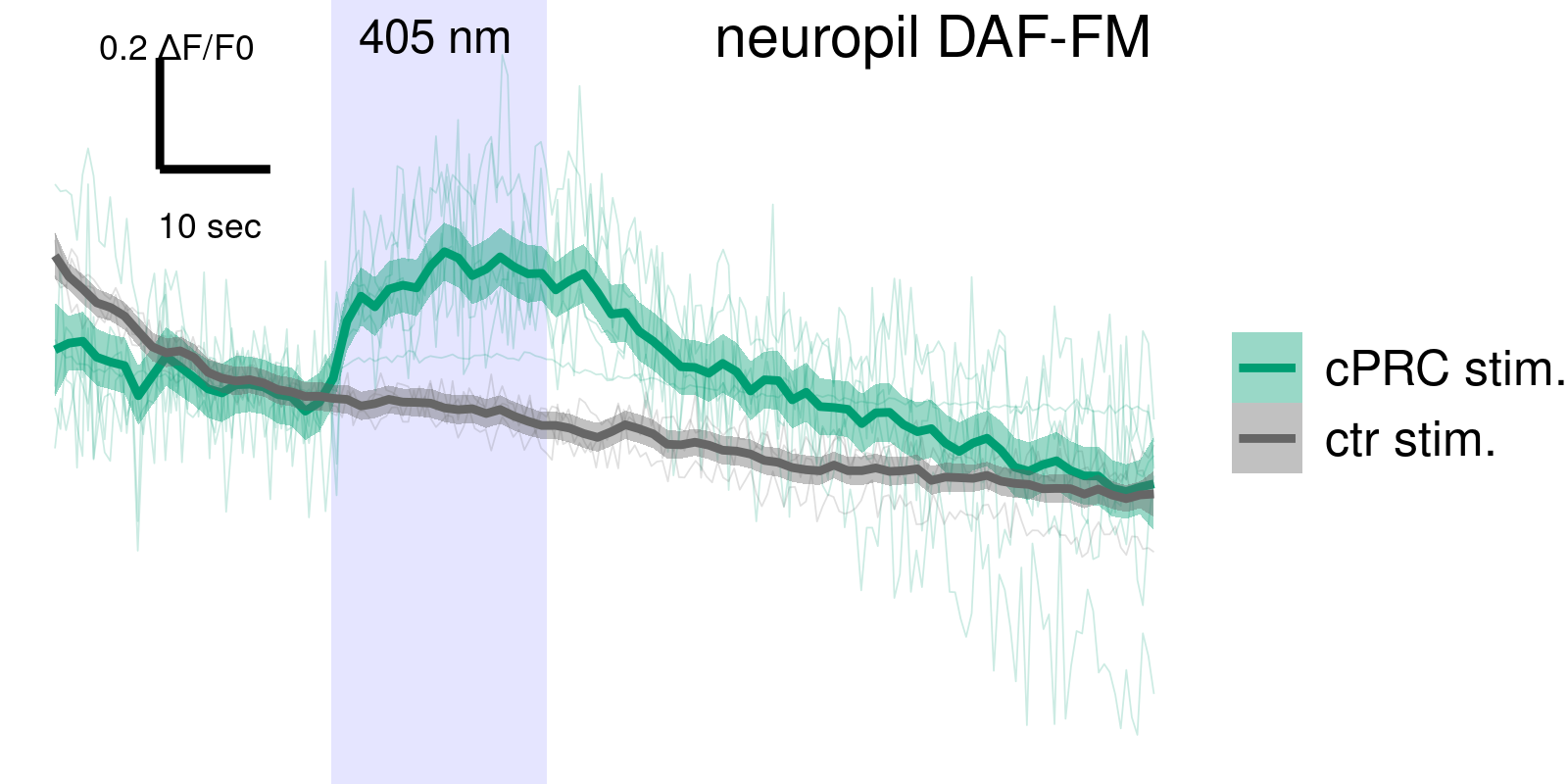
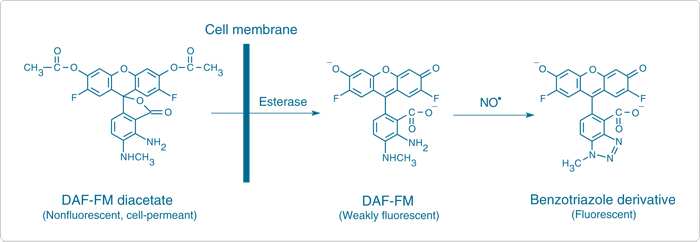
NOS mutants have altered cPRC response
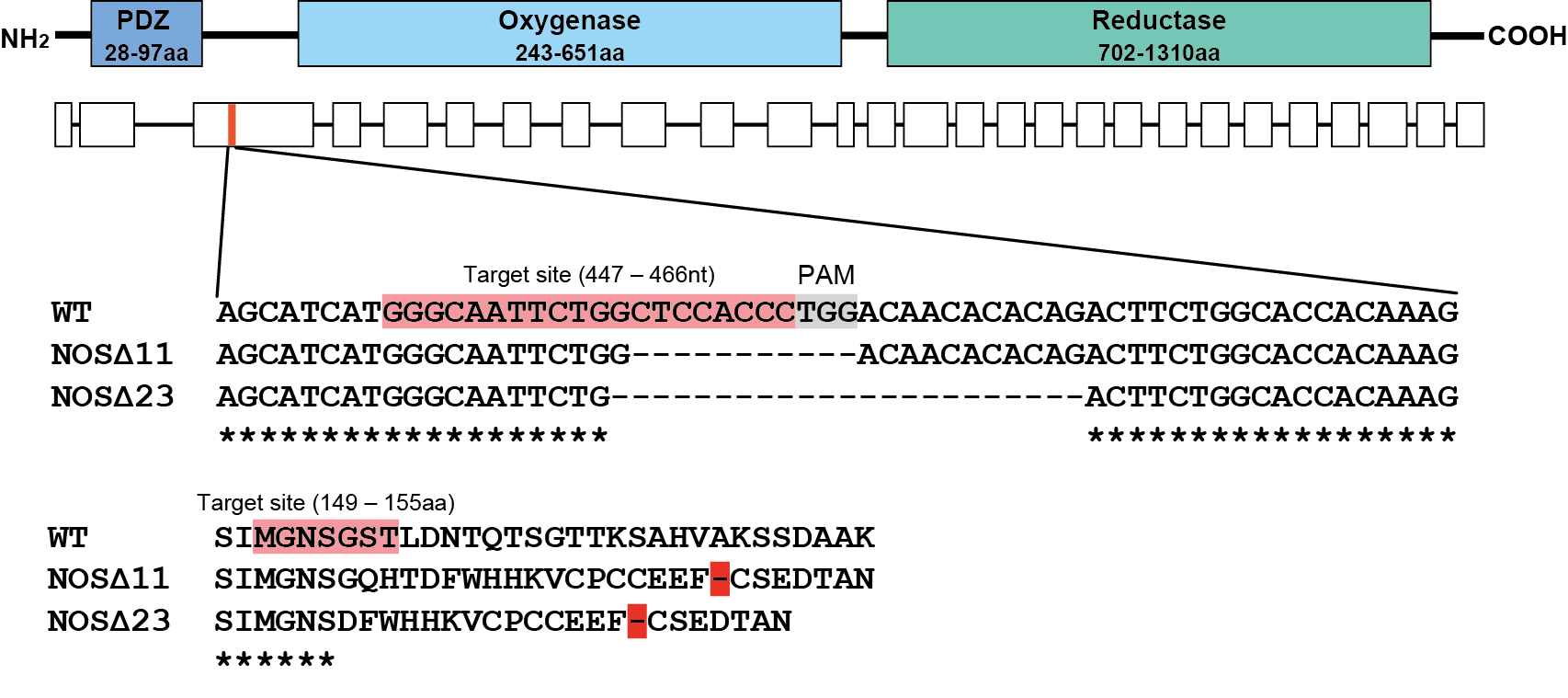
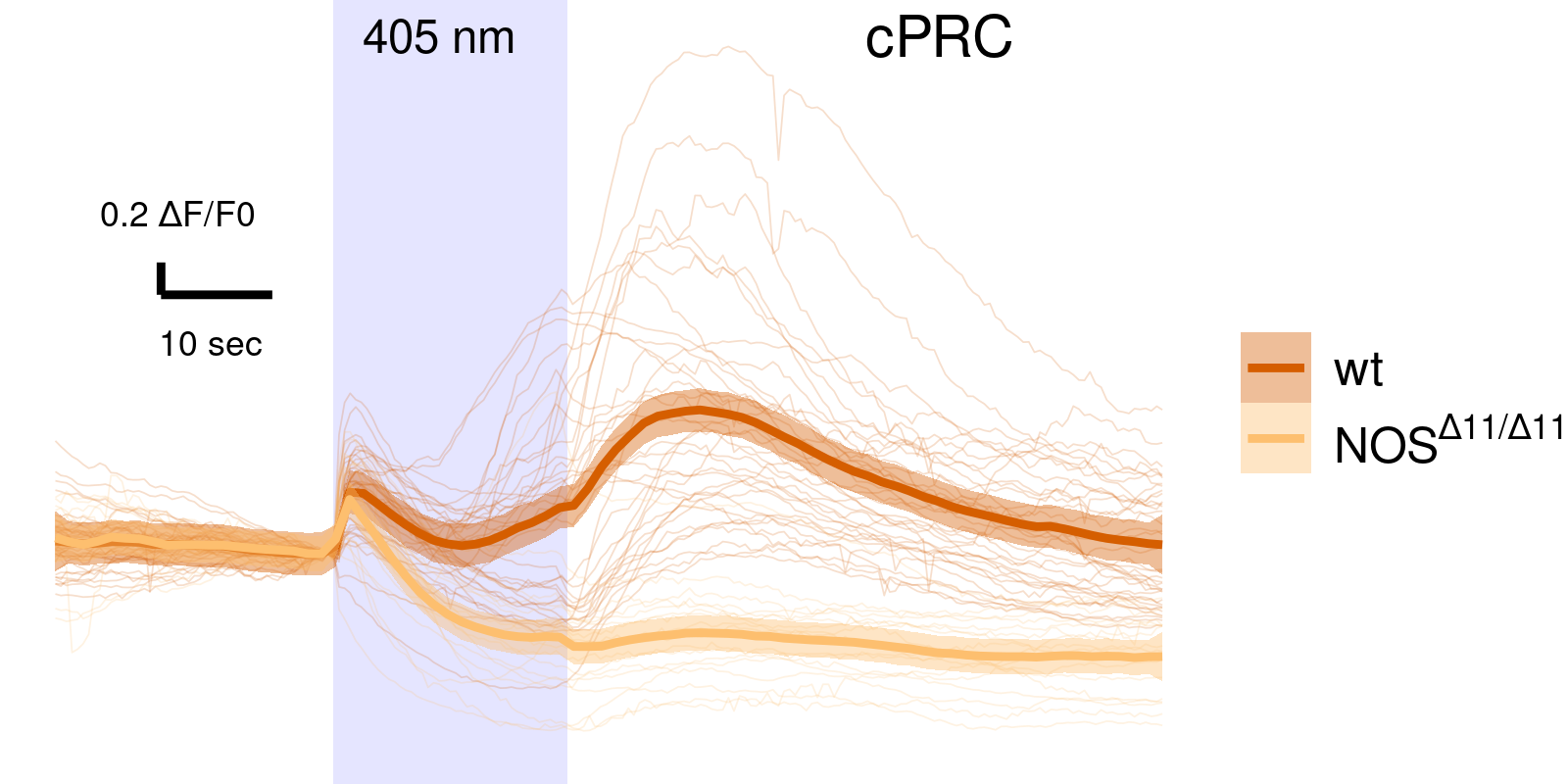
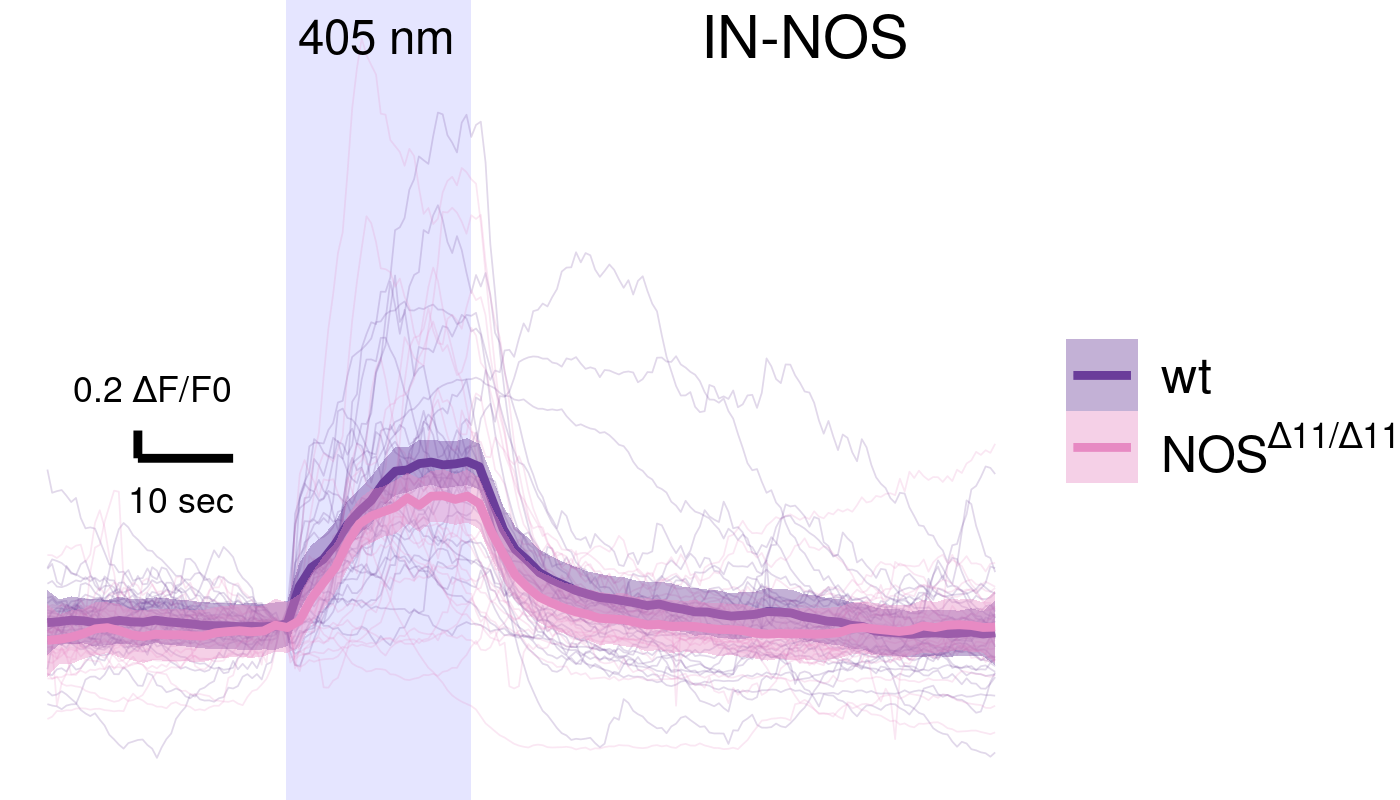
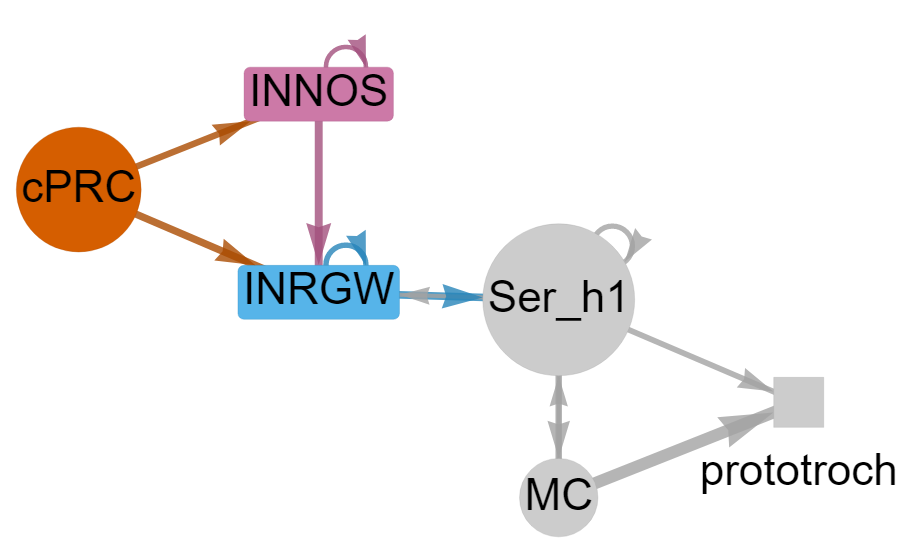
NOS mutants have altered INRGW response

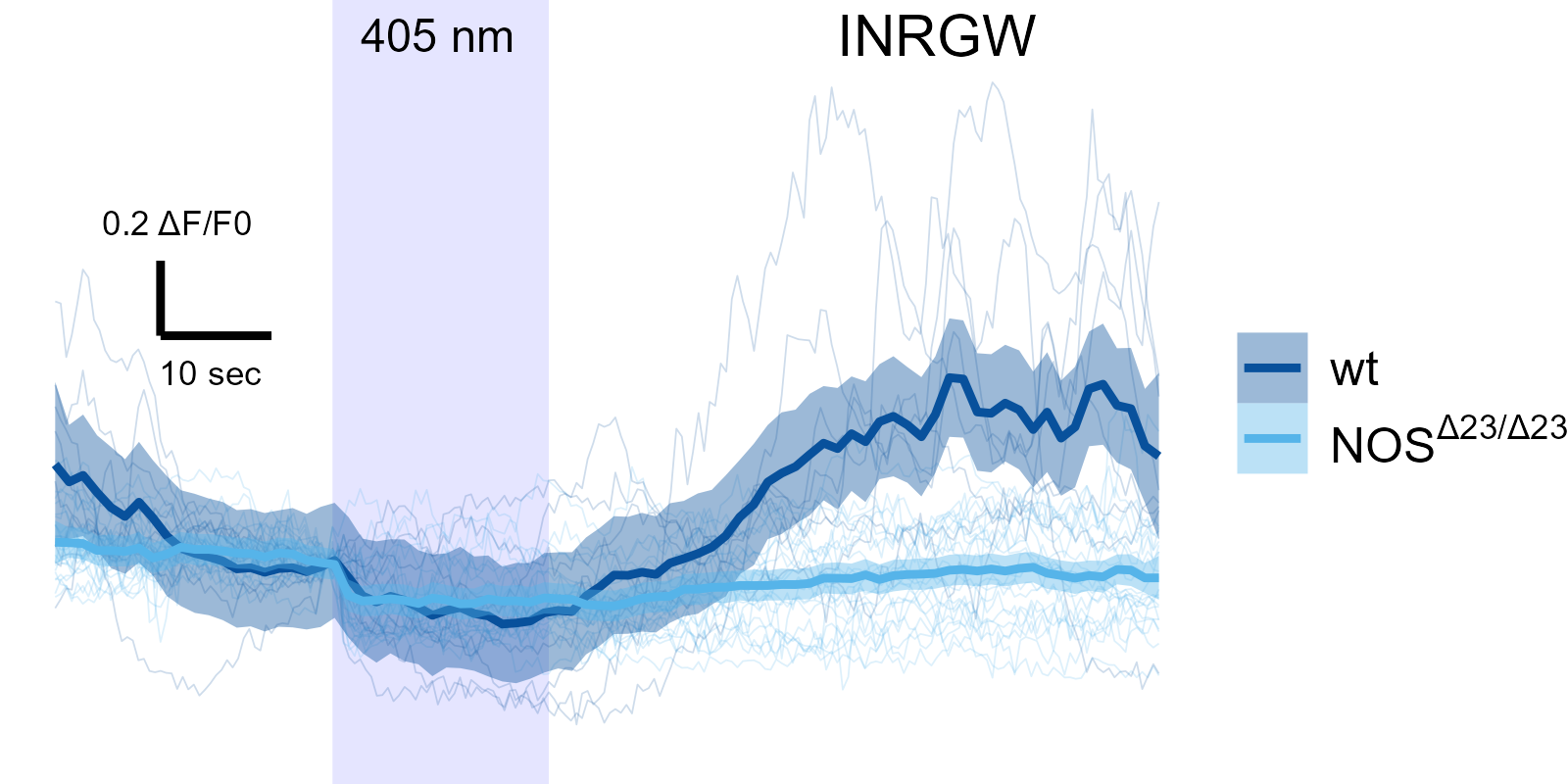

Ciliary response to UV in wt and NOS mutants

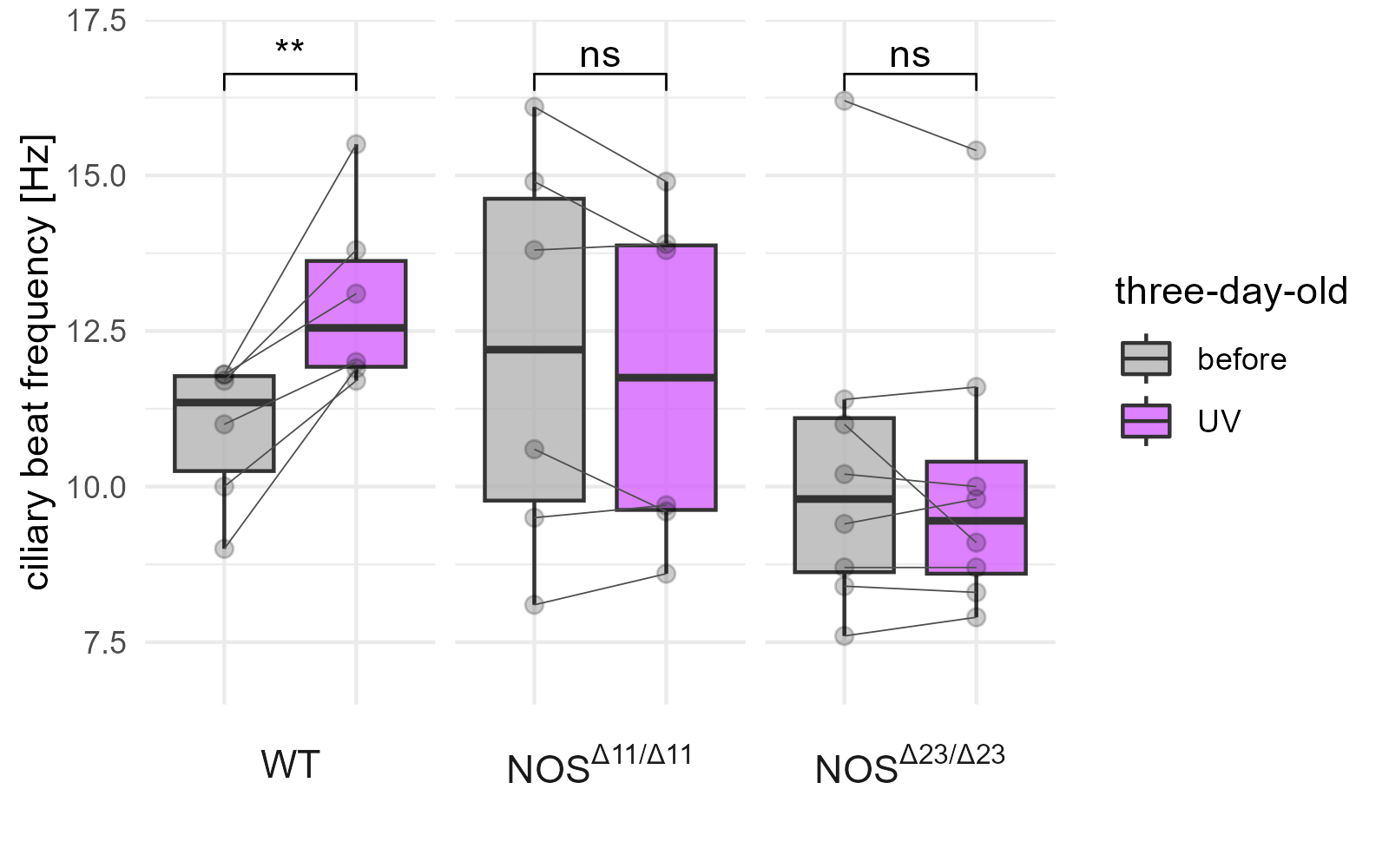 ciliary beat frequency
ciliary beat frequency
![]() Swimming speed
Swimming speed
NOS mutants show defective UV avoidance
![]()
NO signal is short-range
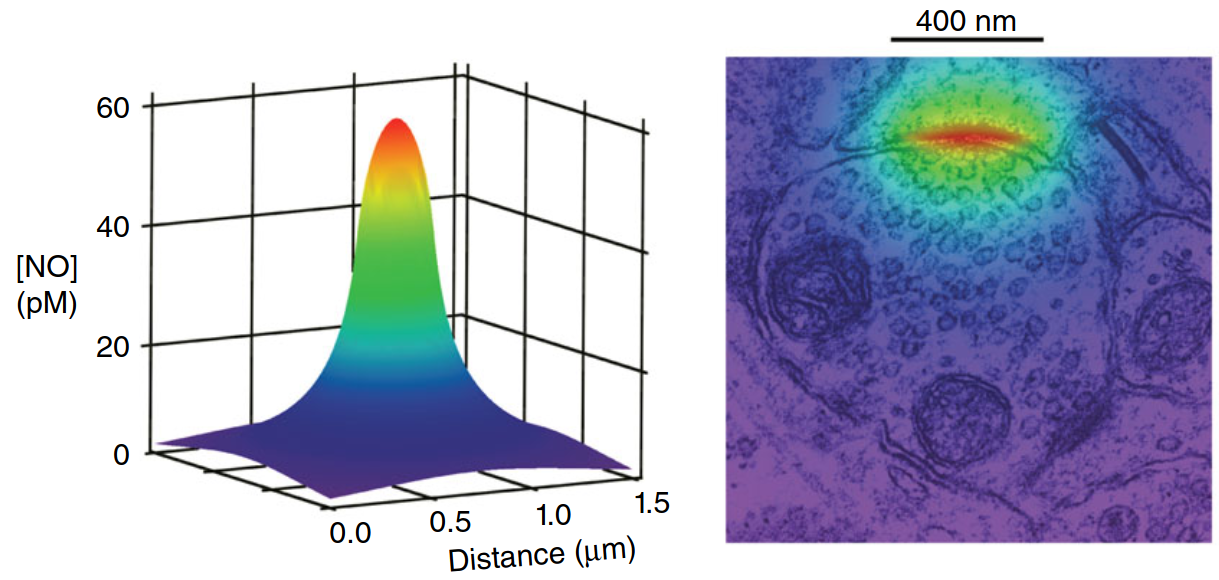
NOS protein in the INNOS dendritic compartment

Two unusual guanylyl cyclases in the cPRCs
NIT-GC1 RNA
NIT-GC1 protein
NIT-GC2 RNA
NIT-GC2 protein
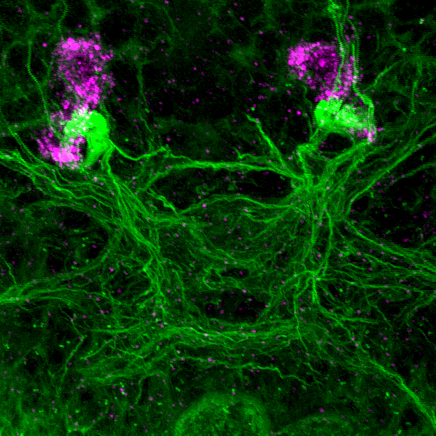
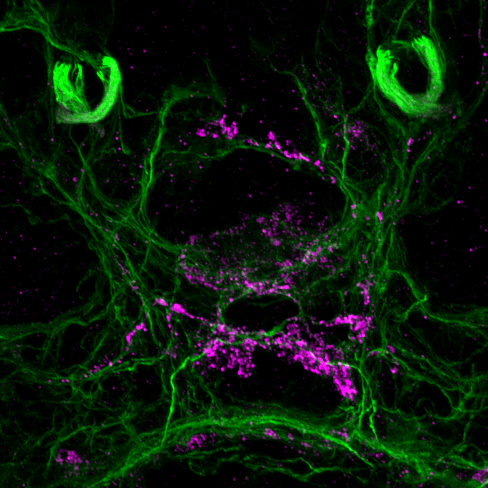
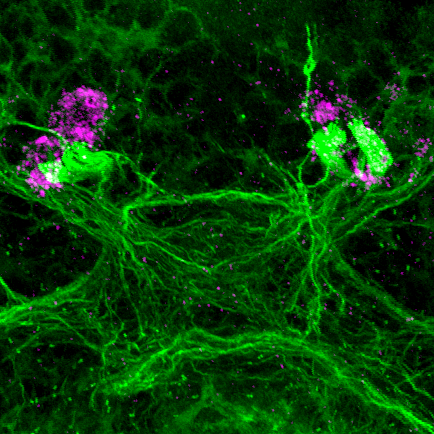
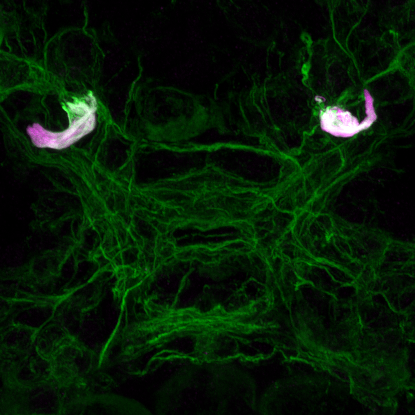
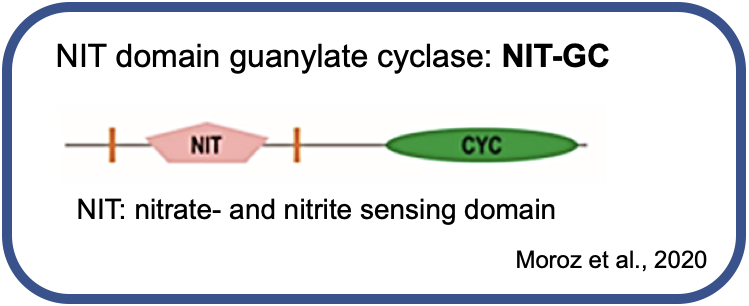
Two unusual guanylyl cyclases in the cPRCs
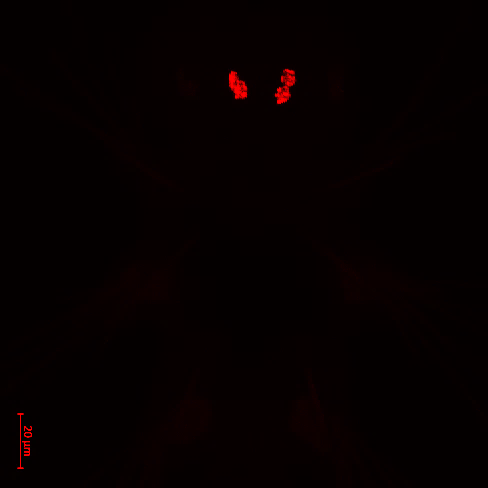
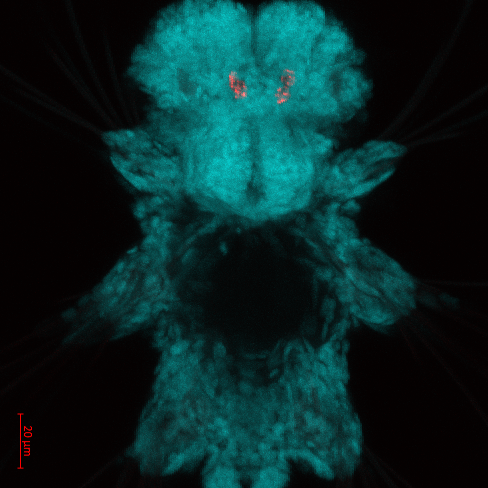
NIT-GC1 producs cGMP upon NO addition
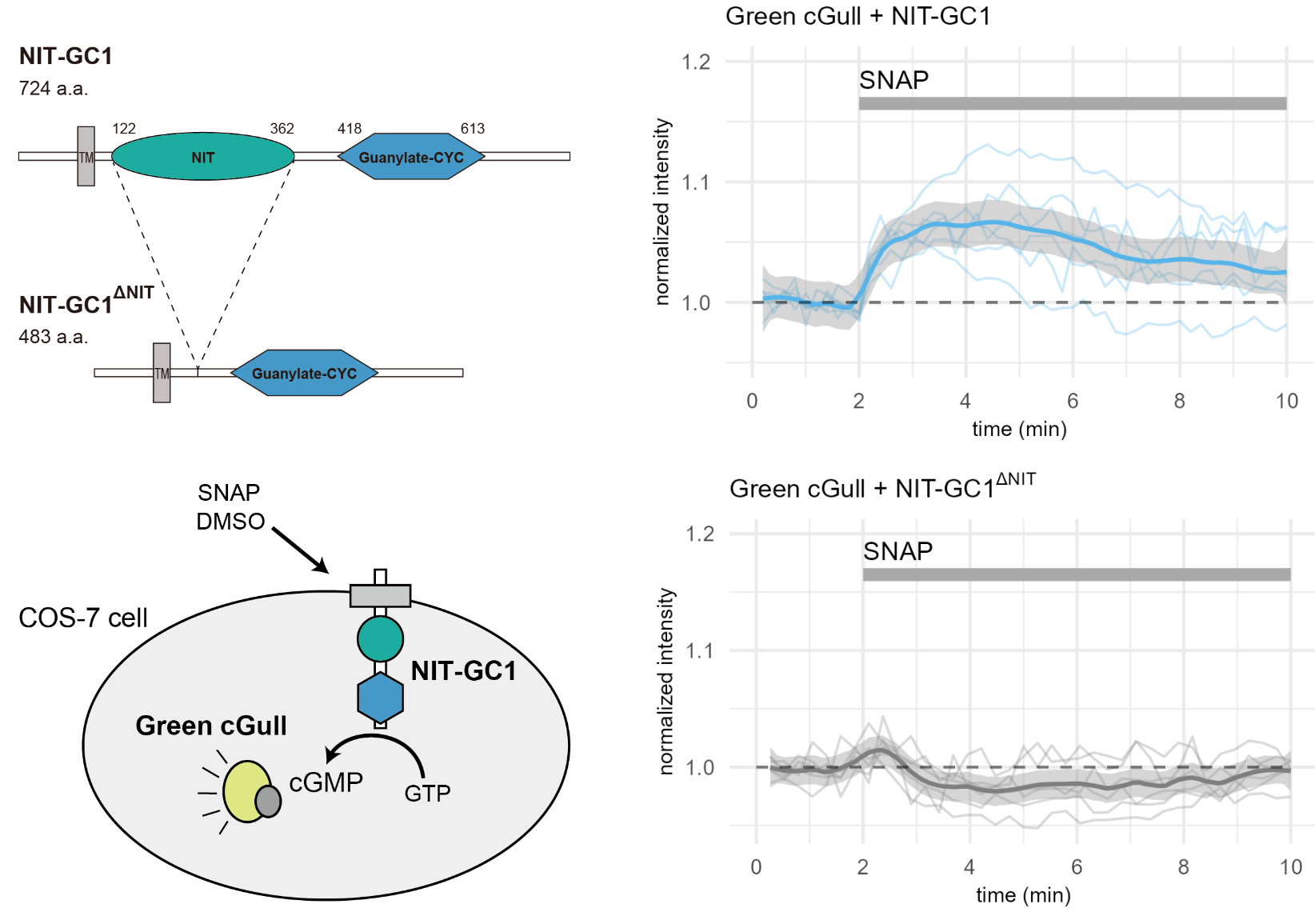
NIT-GC1 mediates NO-feedback
 anti-NIT-GC1 immuno
anti-NIT-GC1 immuno
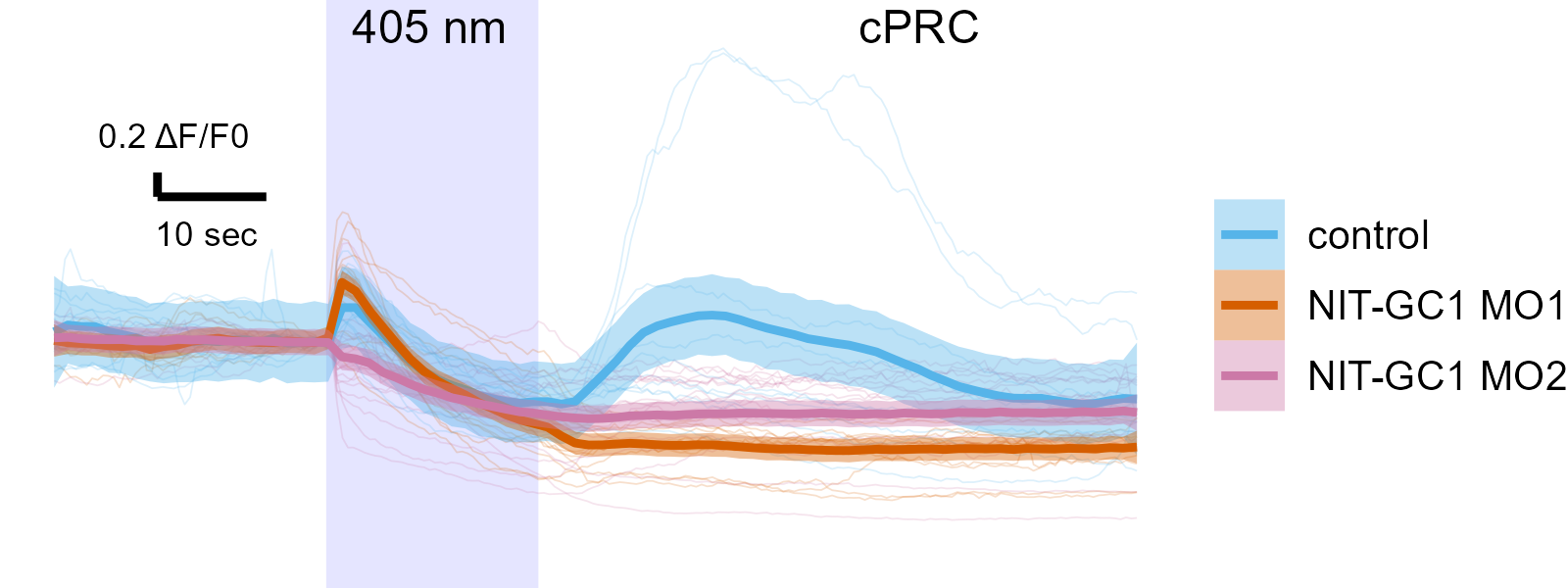
NIT-GC2 mediates phototransduction
 anti-NIT-GC2 immuno
anti-NIT-GC2 immuno
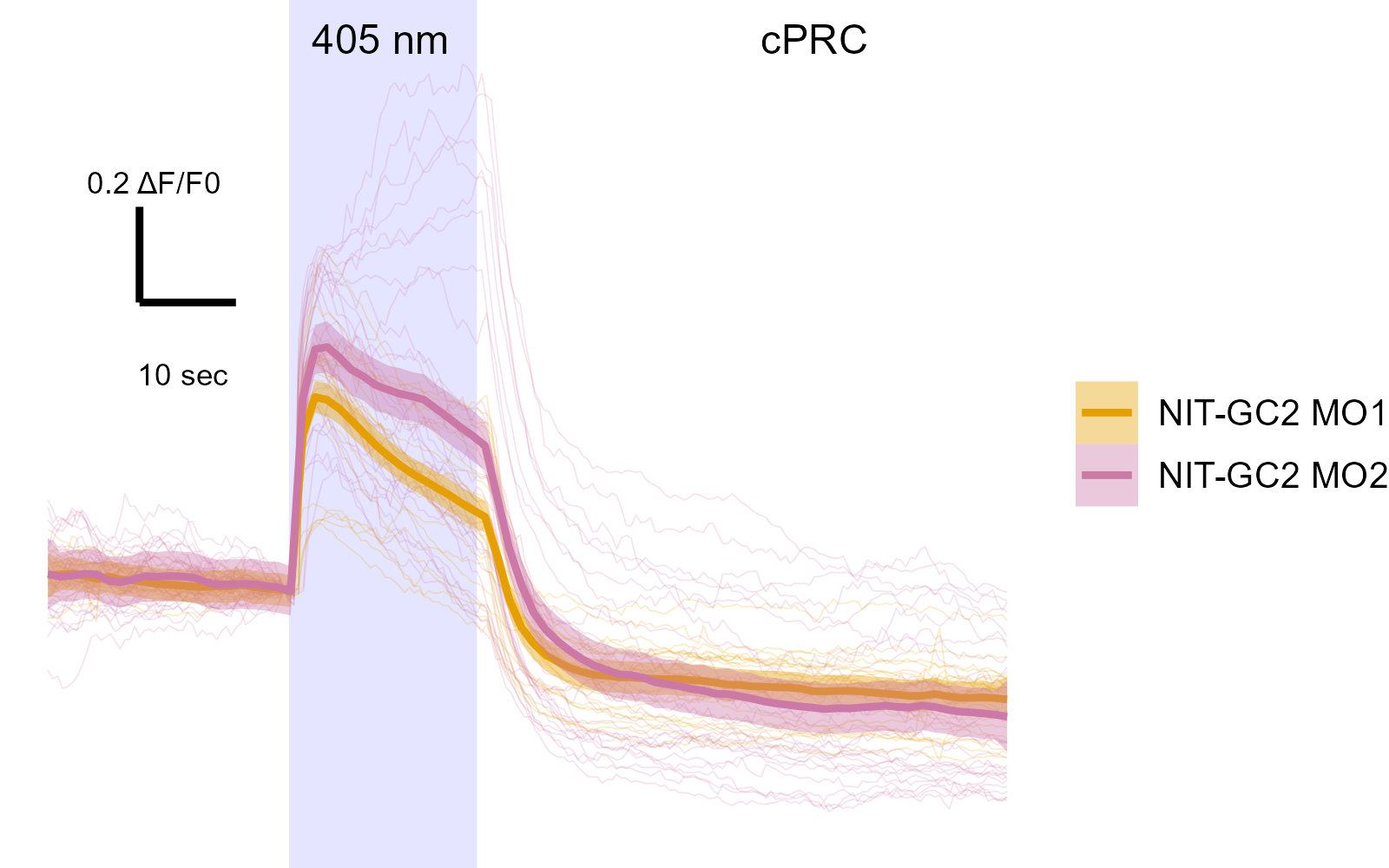
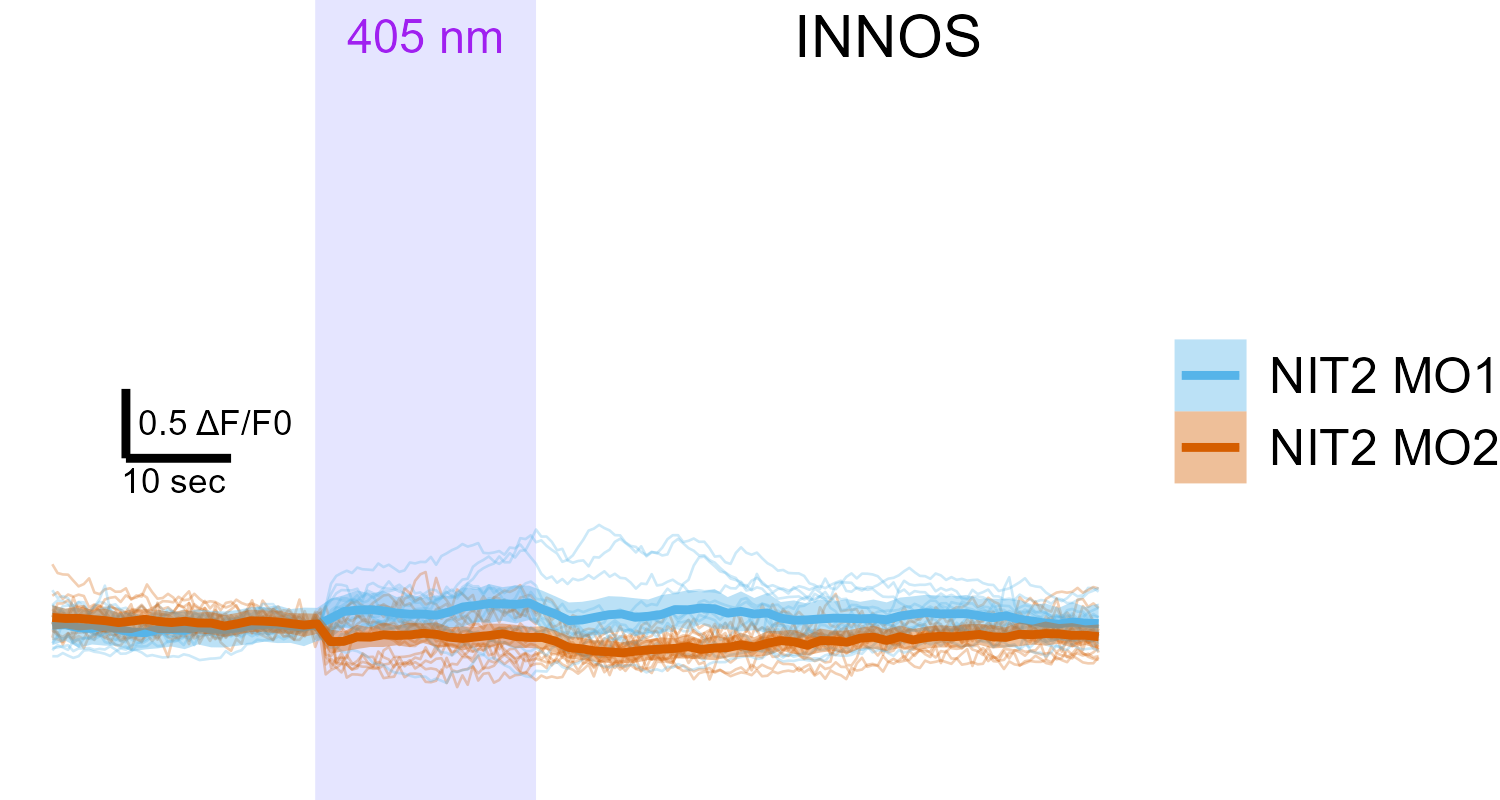
Mathematical modelling of the circuit
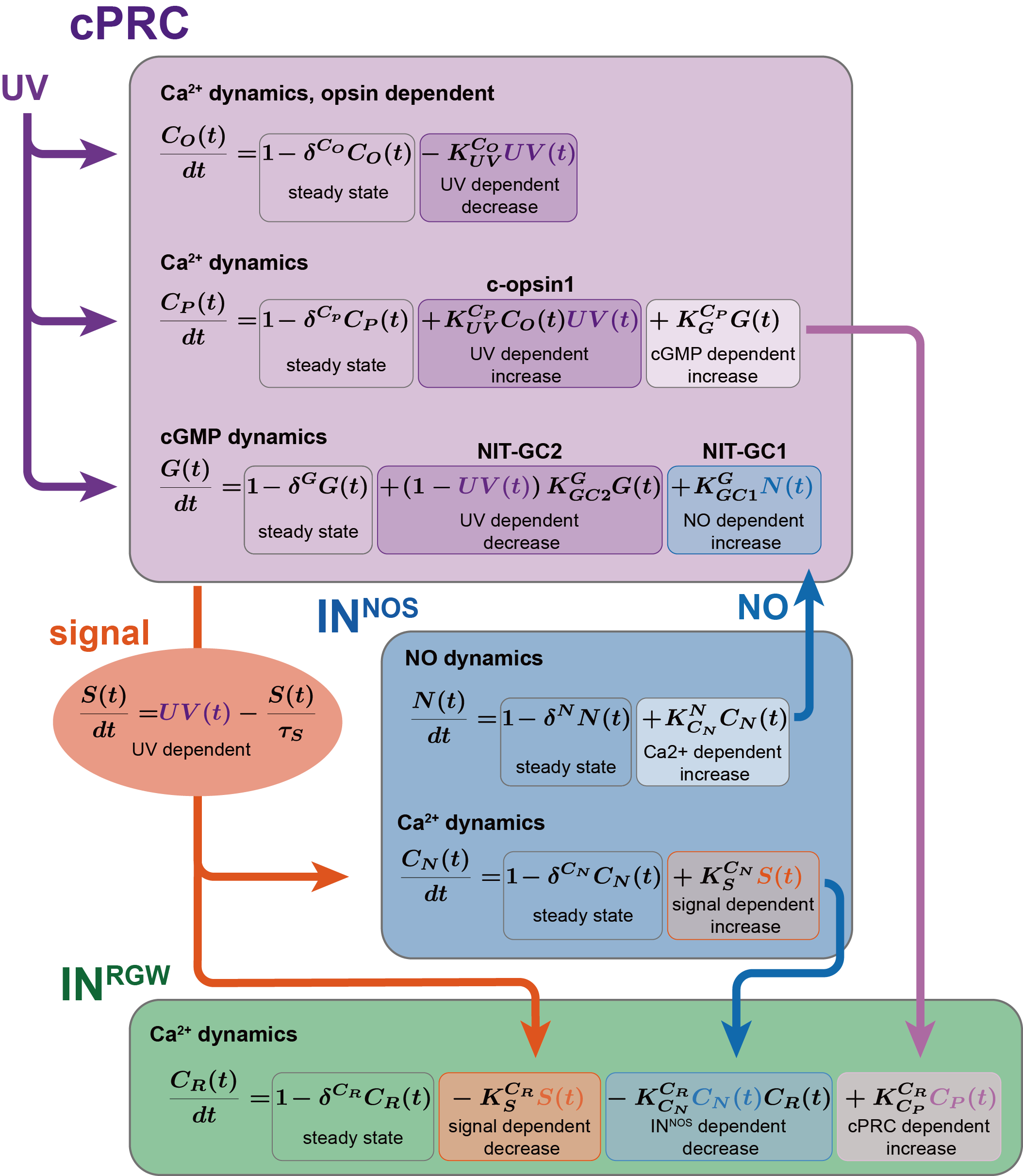
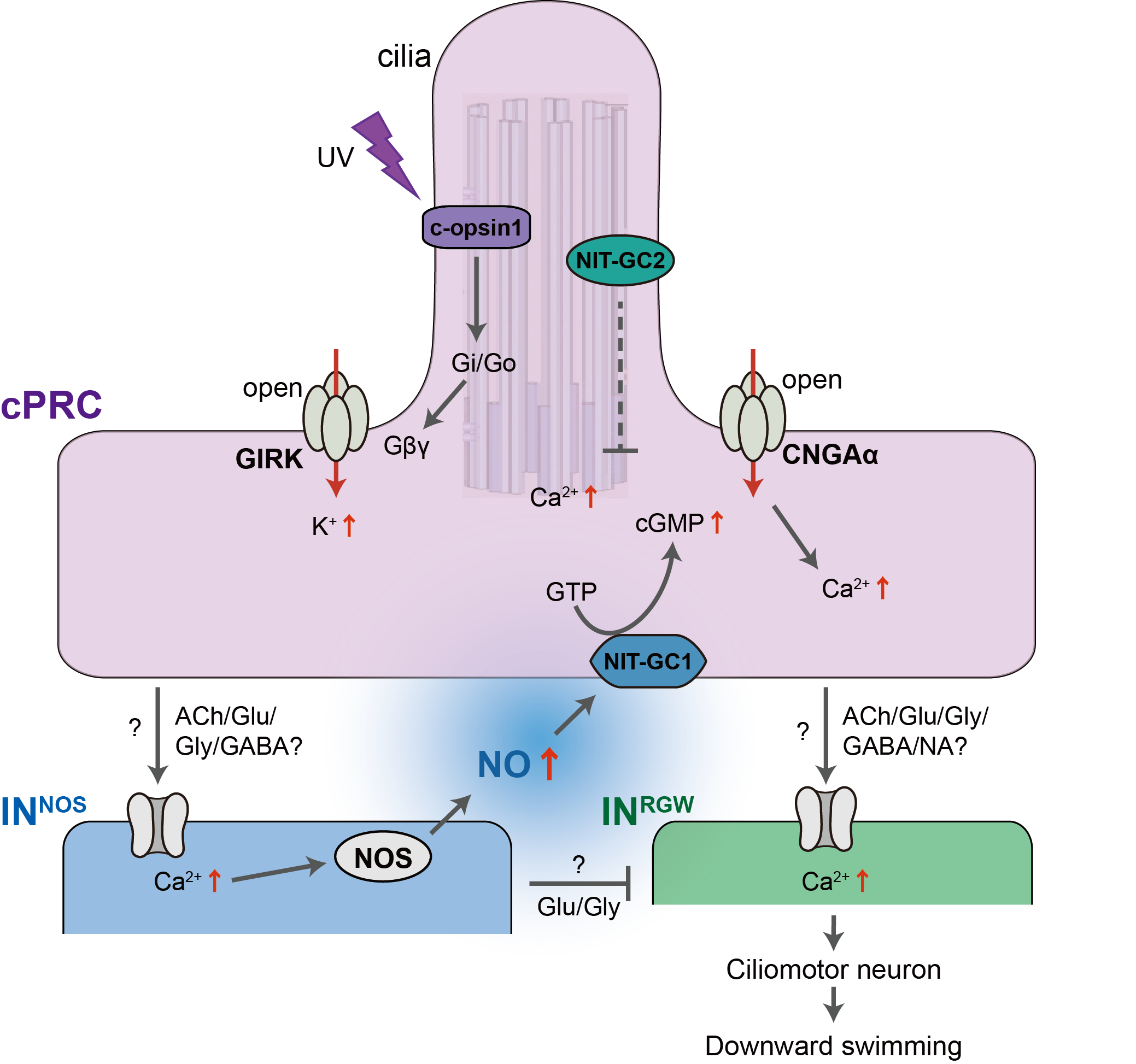
Model fitting
wild type
NOS-11
NOS-23
NIT-GC2 mo.
Integration and memory of UV exposure
Synaptic+chemical connectomes -> circuit dynamics and function

Pressure response in Platynereis larvae
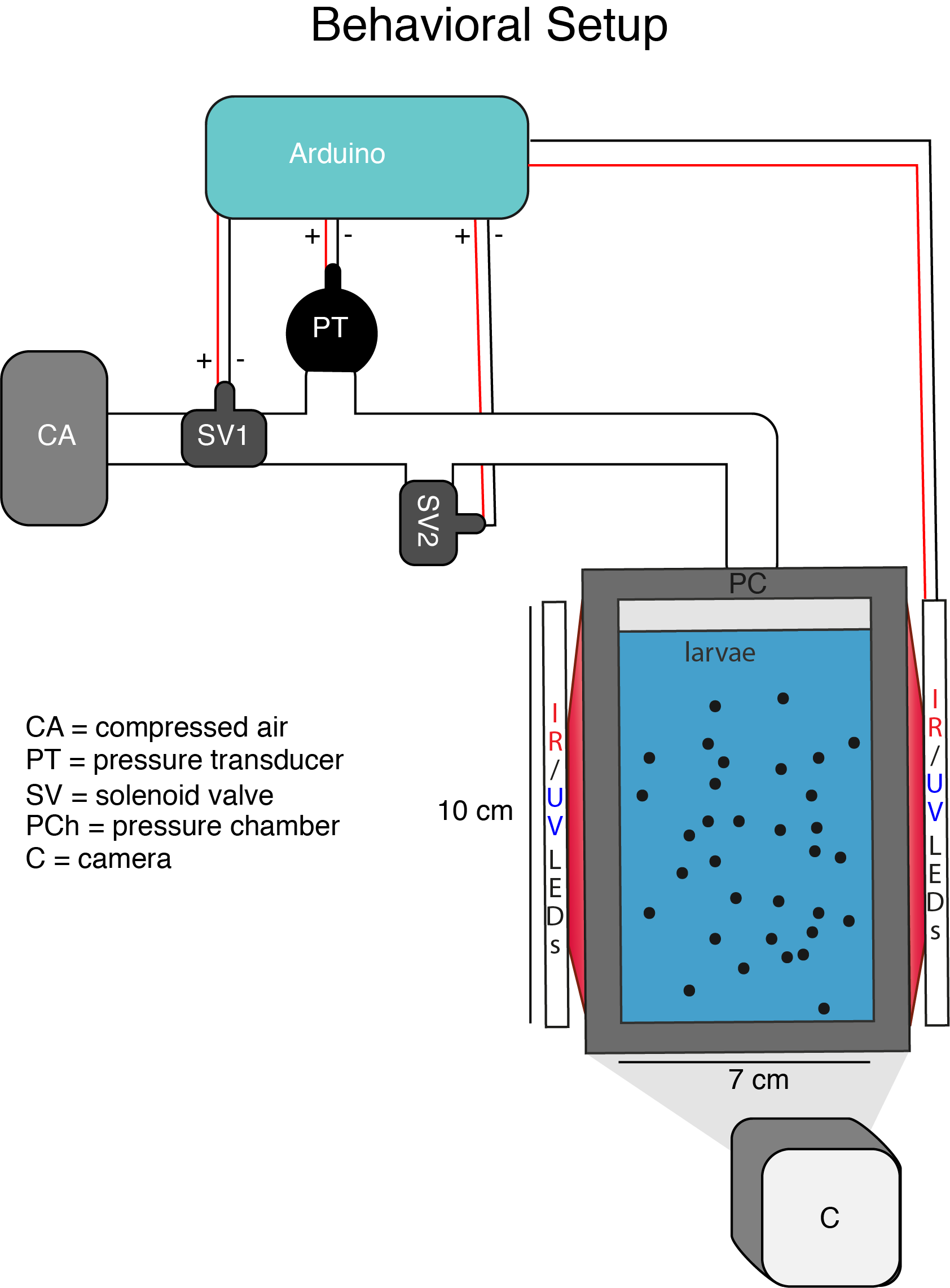

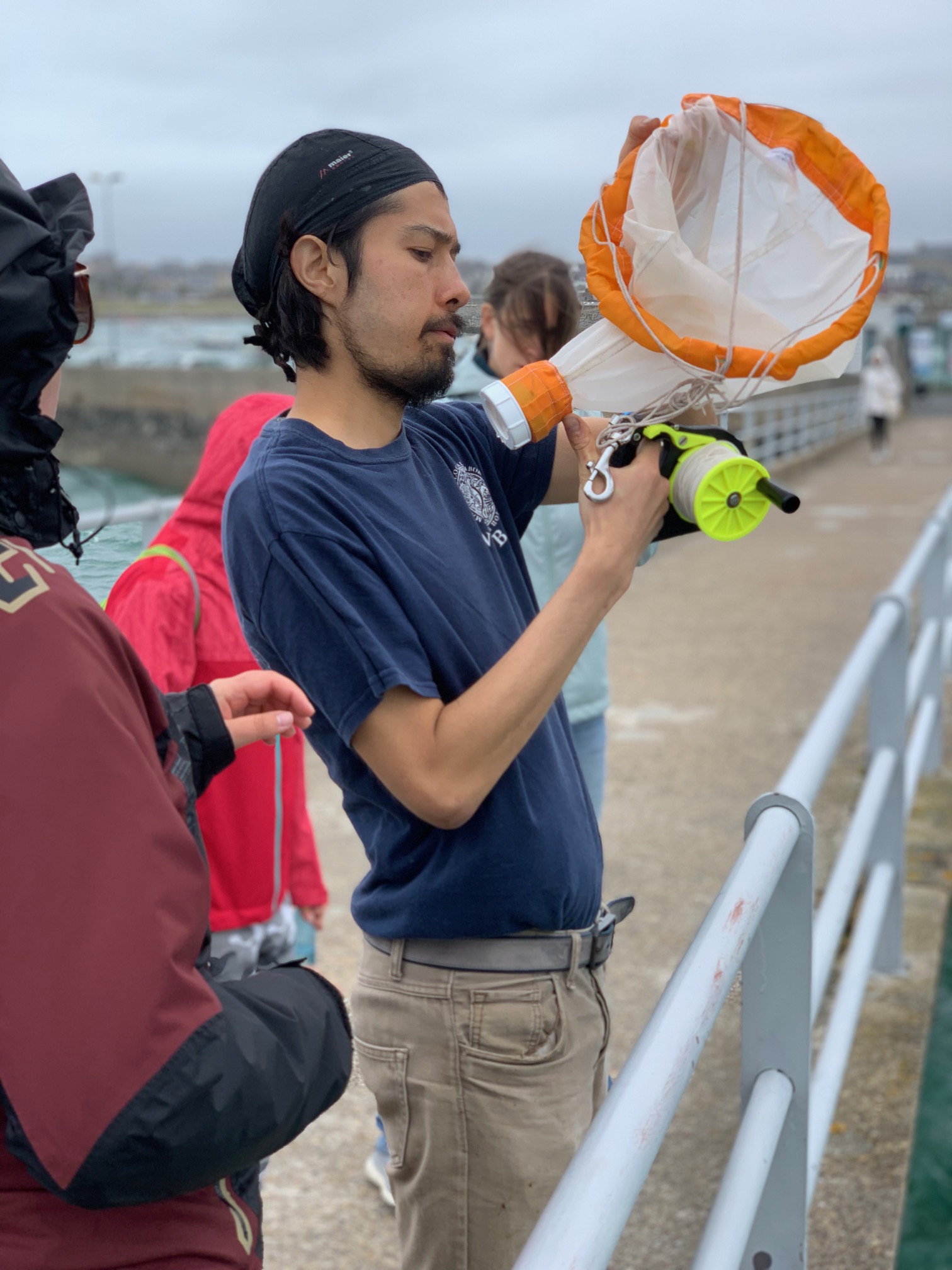
Ciliary photoreceptor cells sense Δ pressure
Microscopy pressure chamber 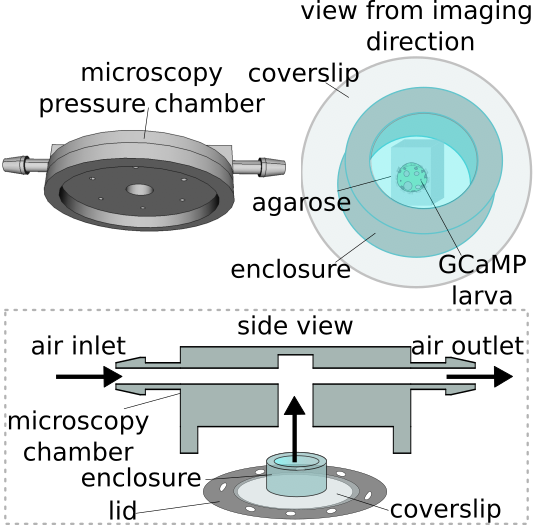
Calcium imaging 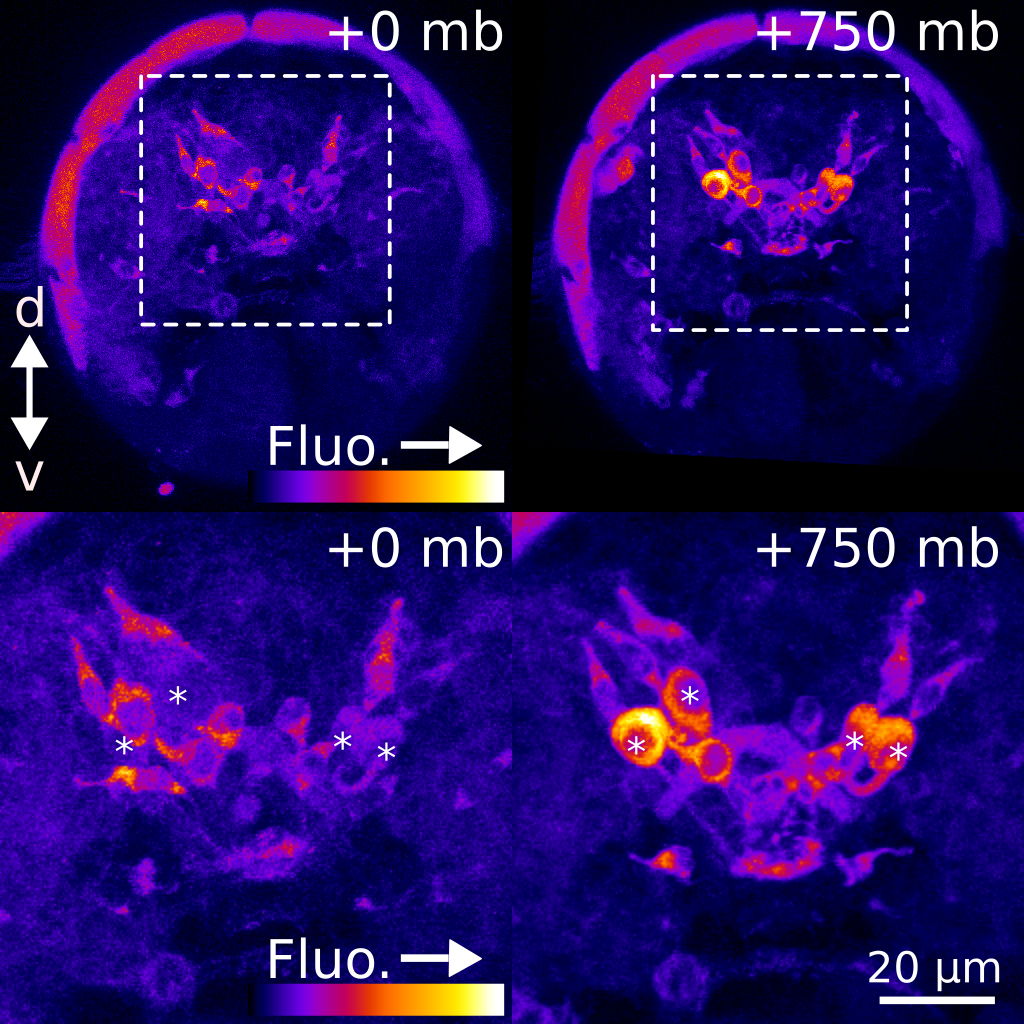
Photoreceptor responses to pressure are graded
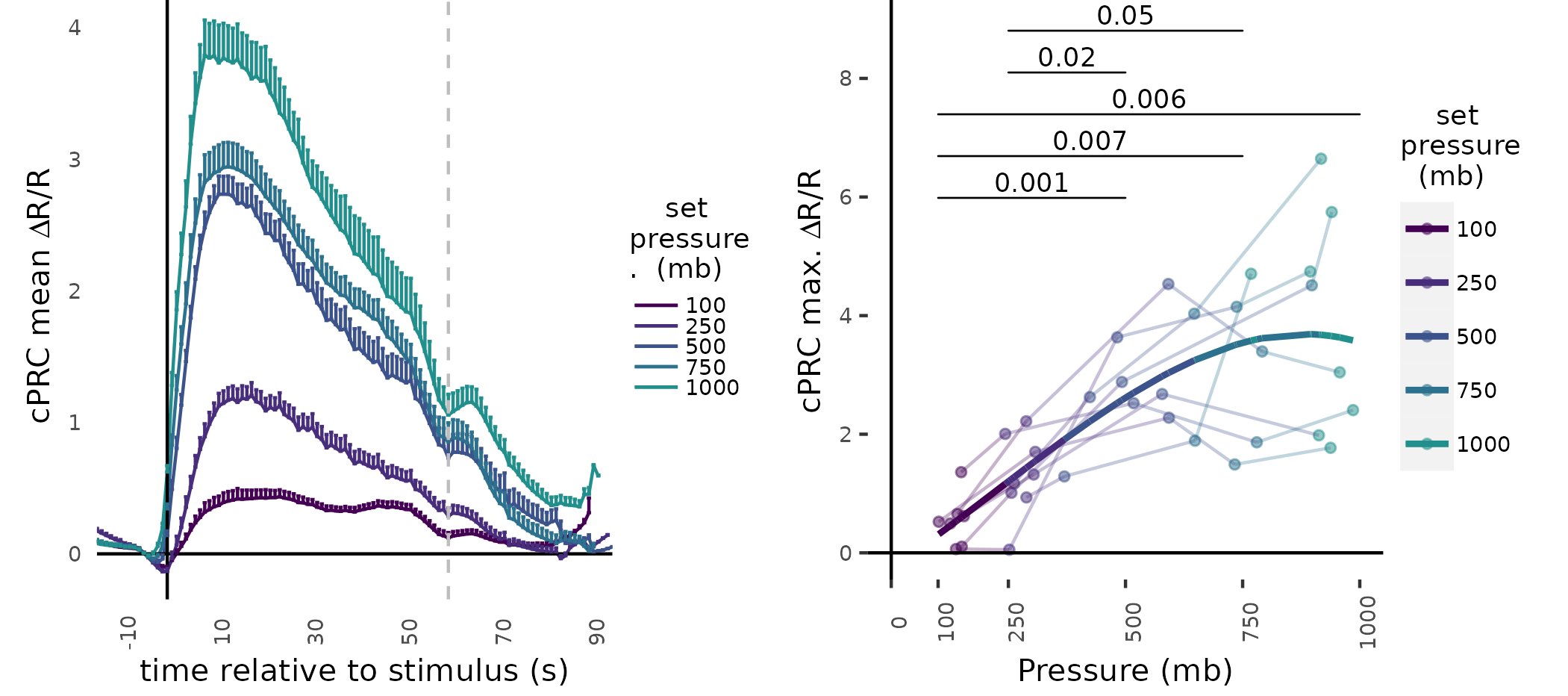
Pressure increases ciliary beating through serotonergic cells
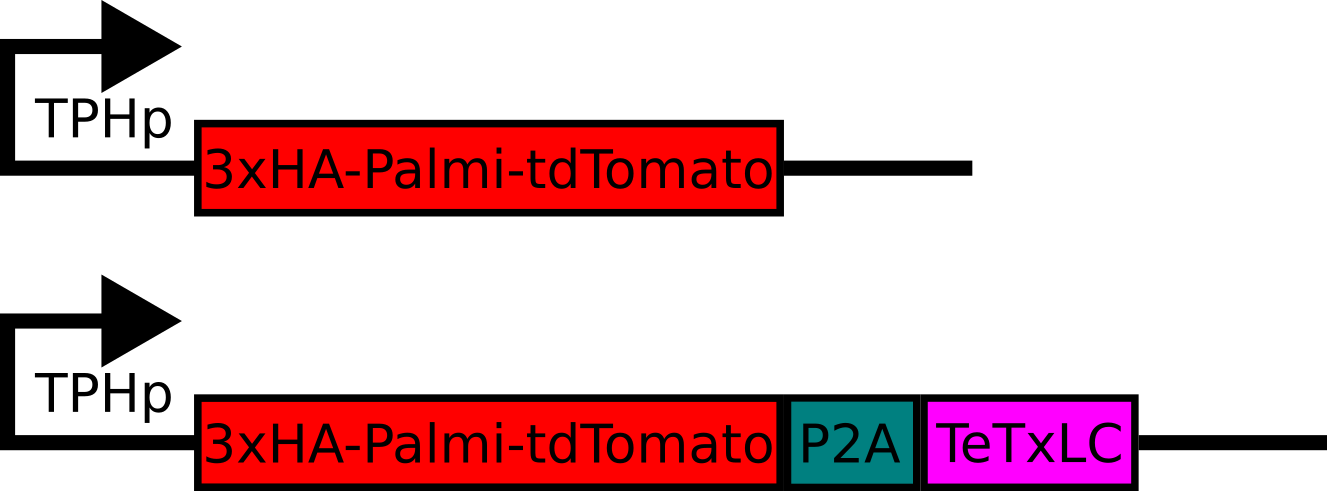
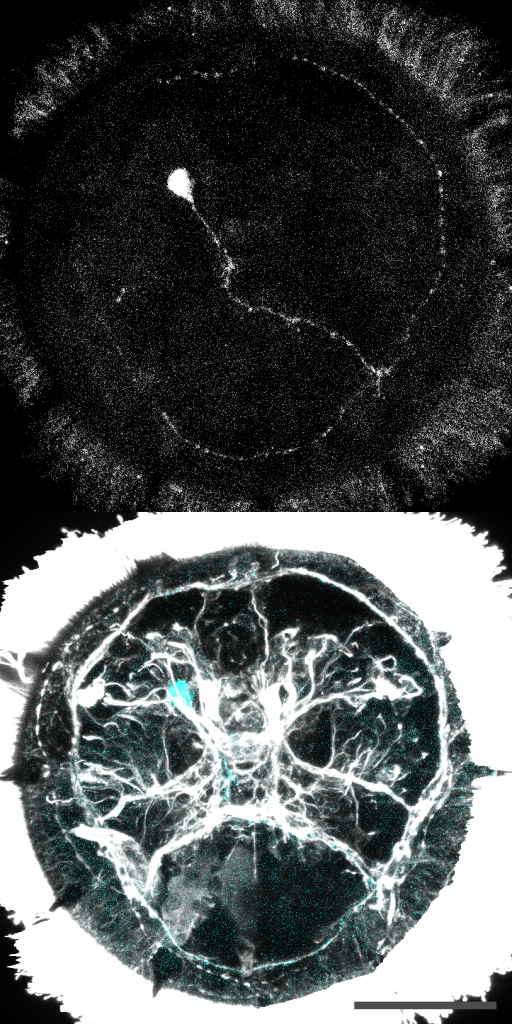
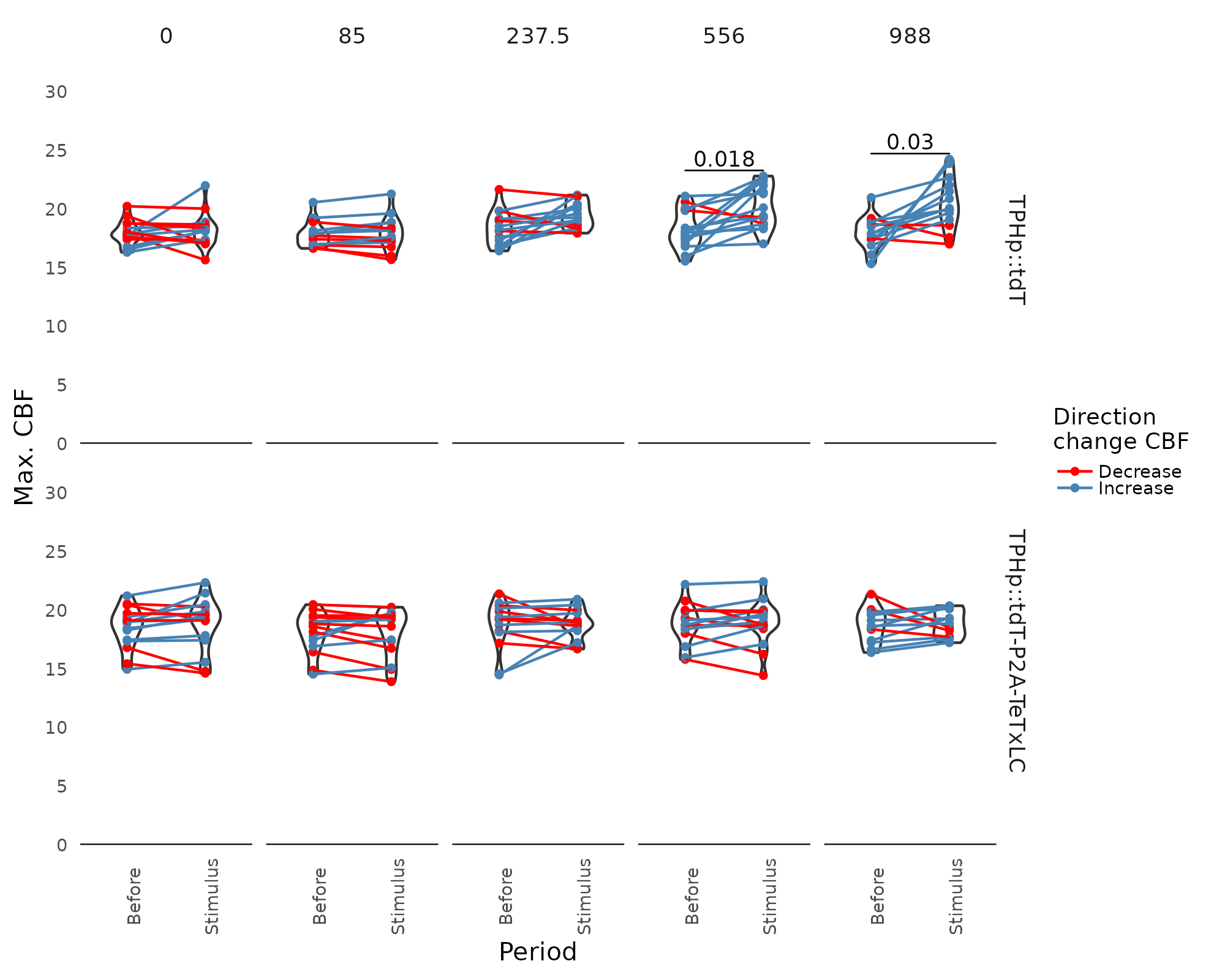
Marine larvae are complex…
Acknowledgements
- Emelie Brodrick
- Cyrielle Kaltenrieder
- Réza Shahidi
- Milena Marinkovic
- Daniel Thiel
- Sanja Jasek
- Cameron Hird
- Rebecca Turner
- Luis A. Bezares-Calderón
- Kei Jokura
- Luis Yanez Guerra
- Alexandra Kerbl
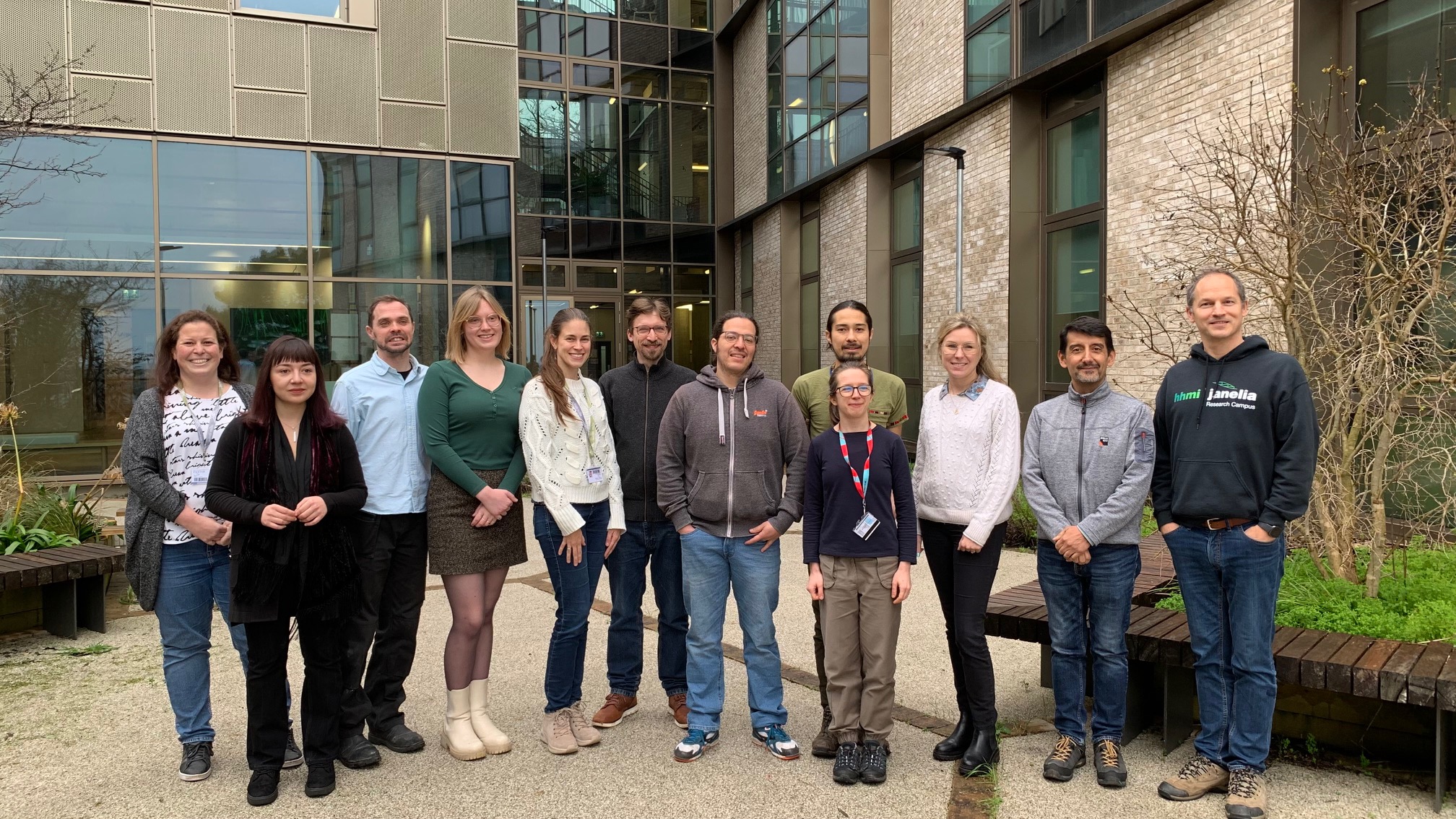

Former lab members
- Albina Asadulina
- James Beard
- Markus Conzelmann
- Nadine Randel
- Philipp Bauknecht
- Martin Gühmann
- Cristina Pineiro-Lopez
- Nobuo Ueda
- Aurora Panzera
- Csaba Verasztó
- Elizabeth Williams